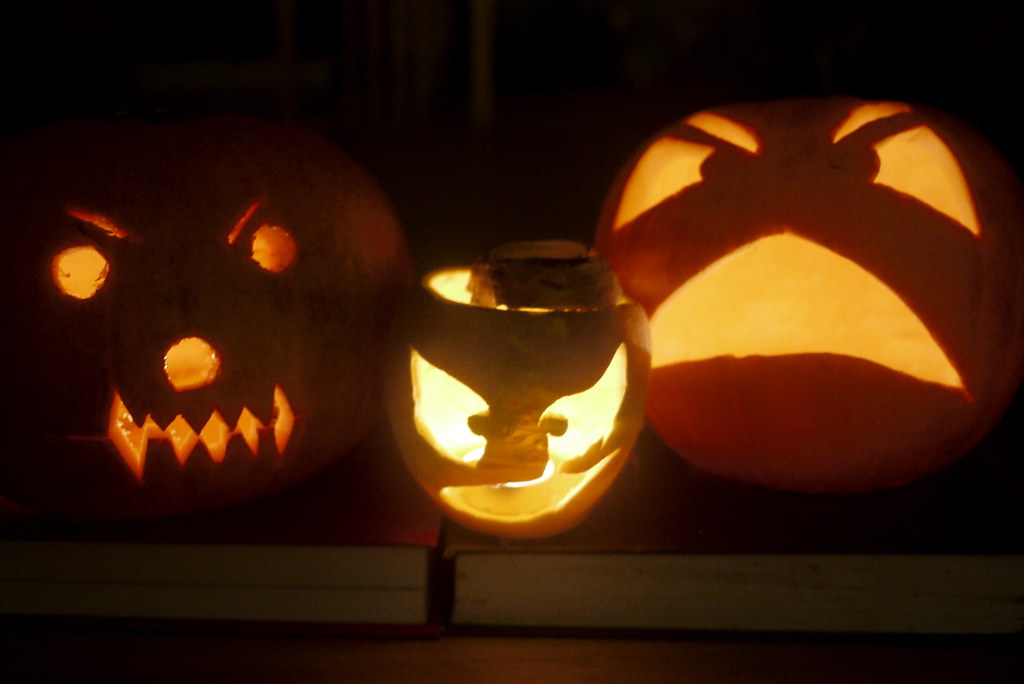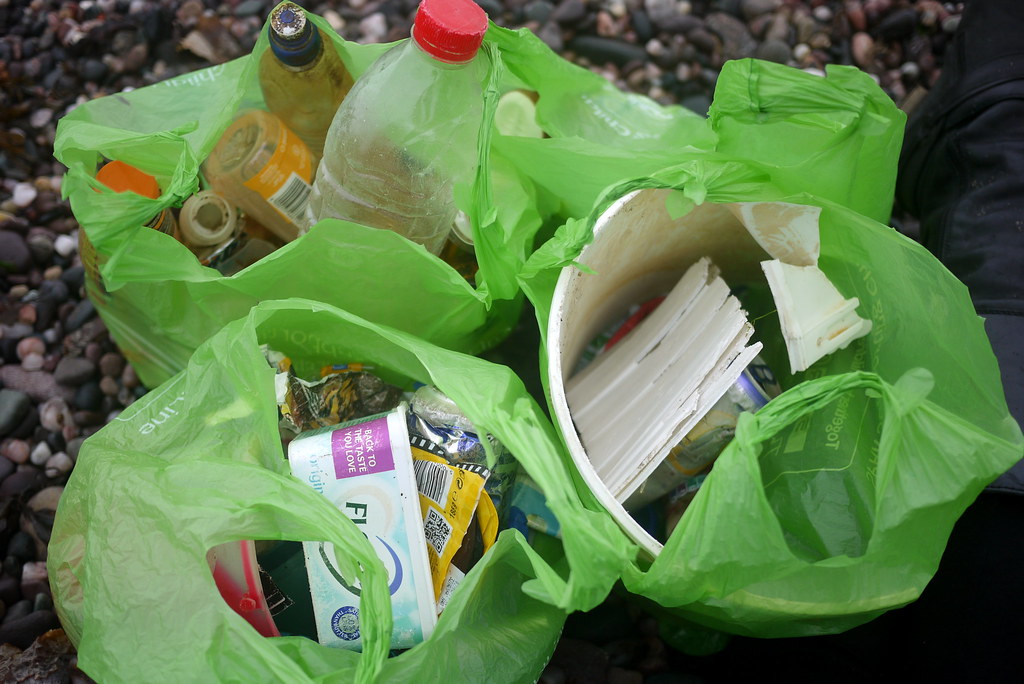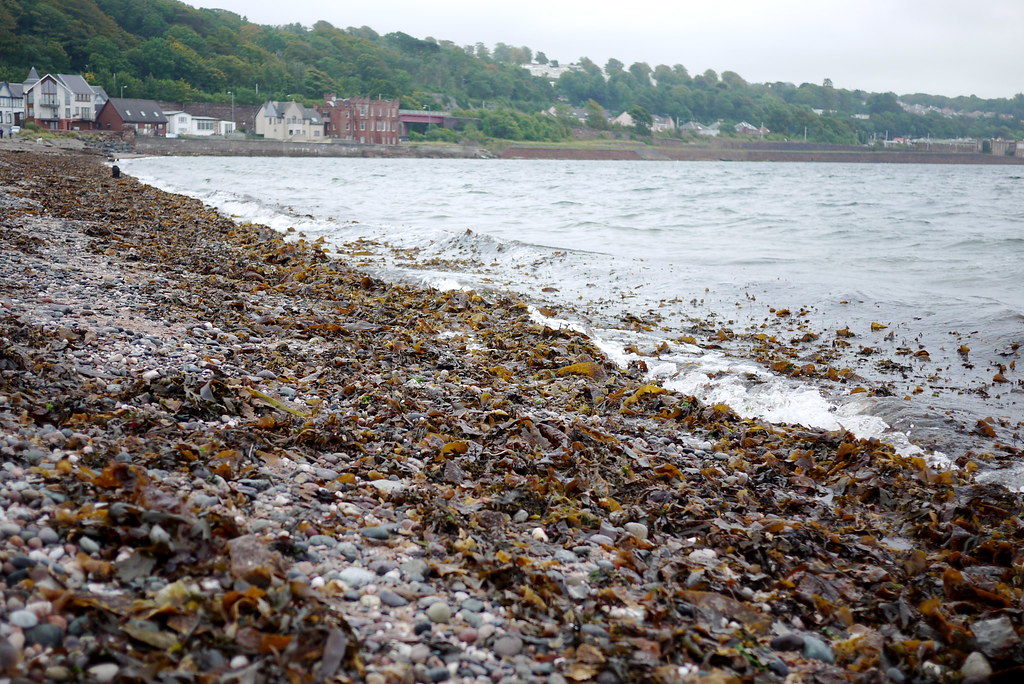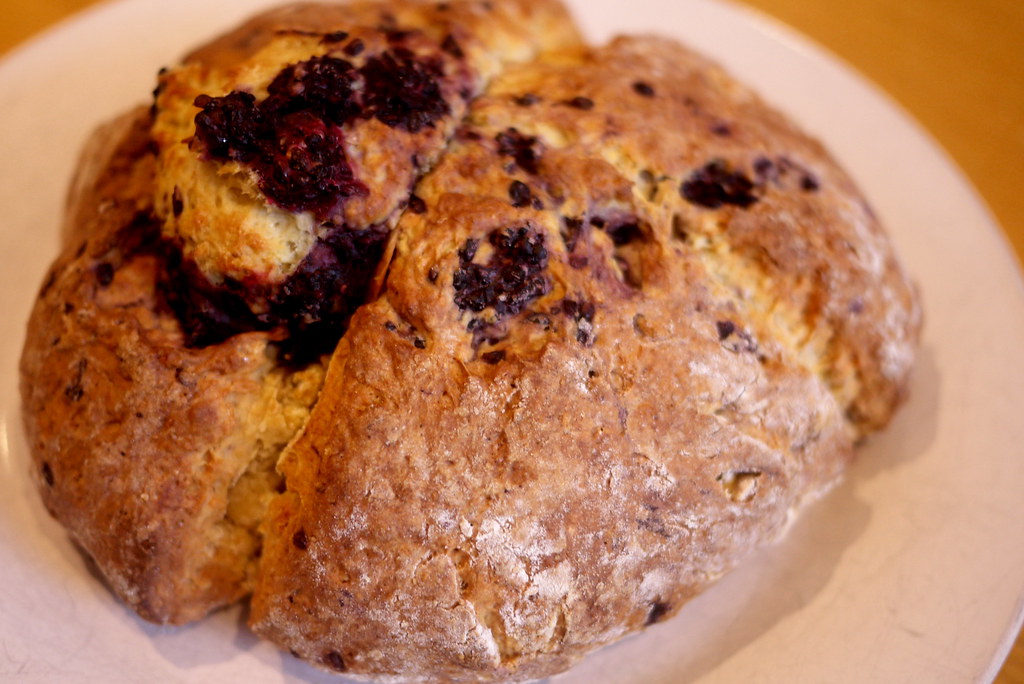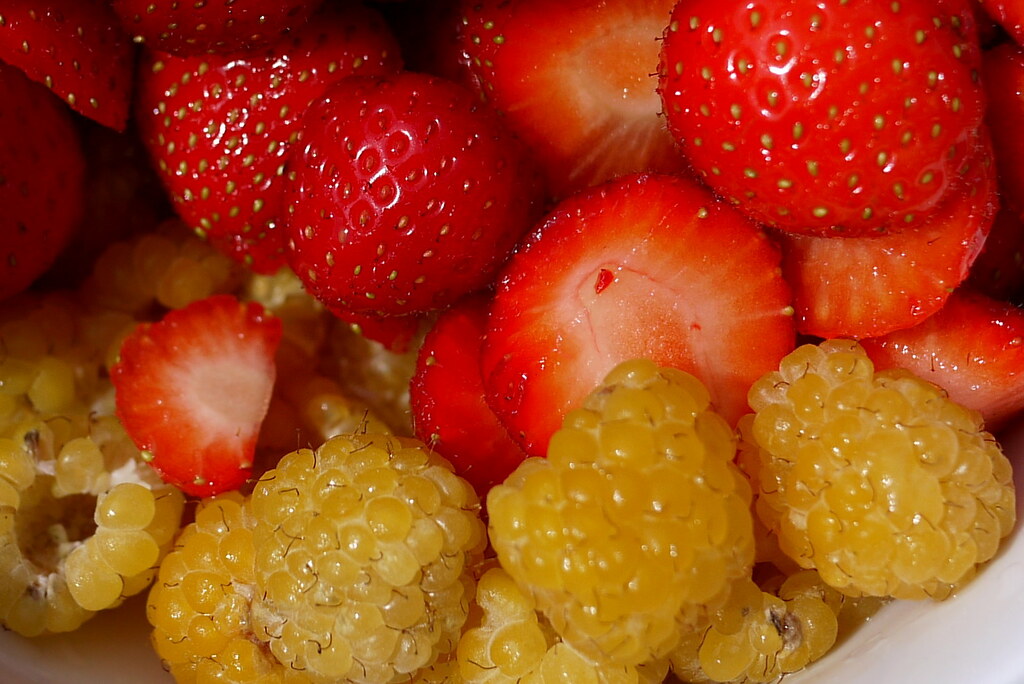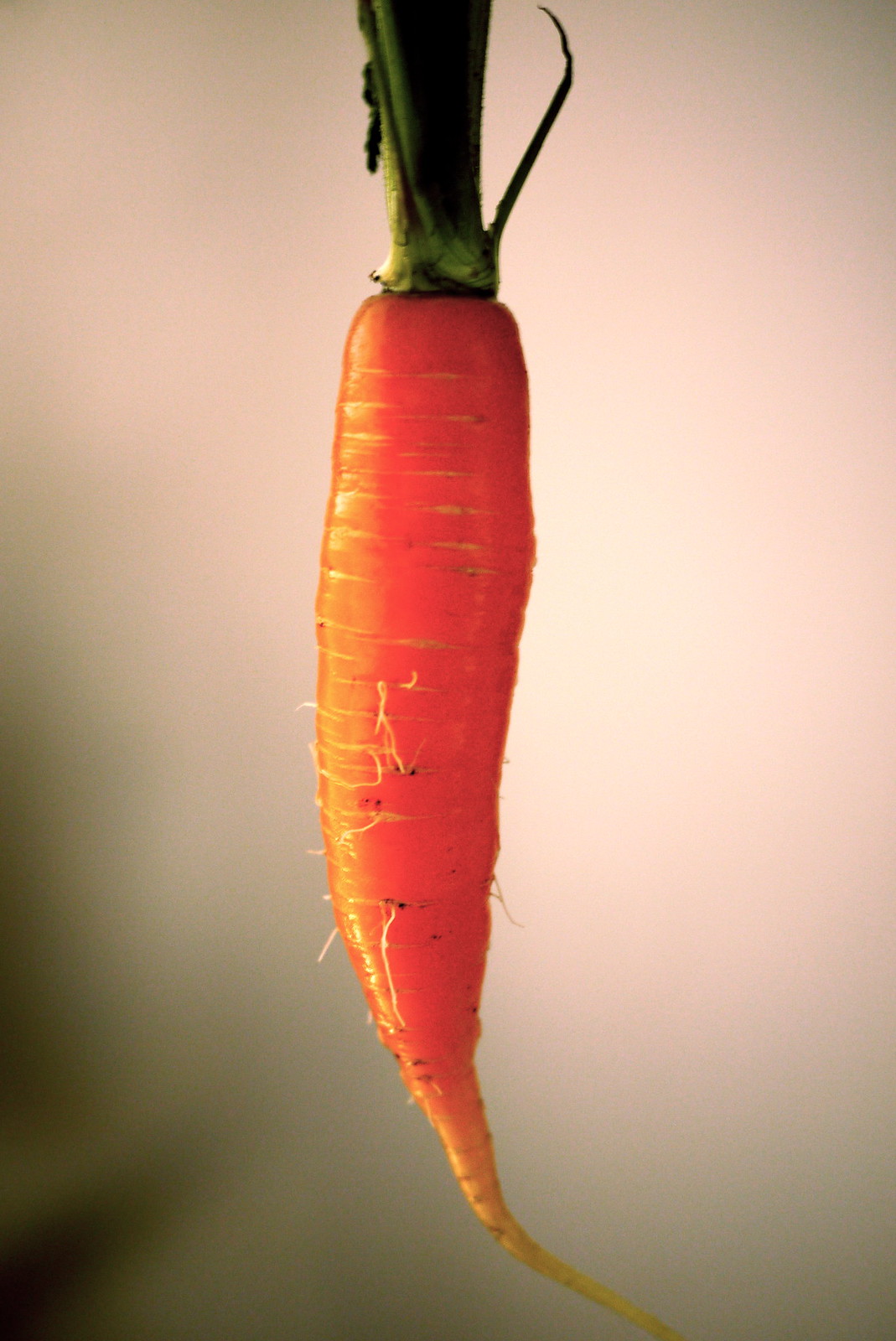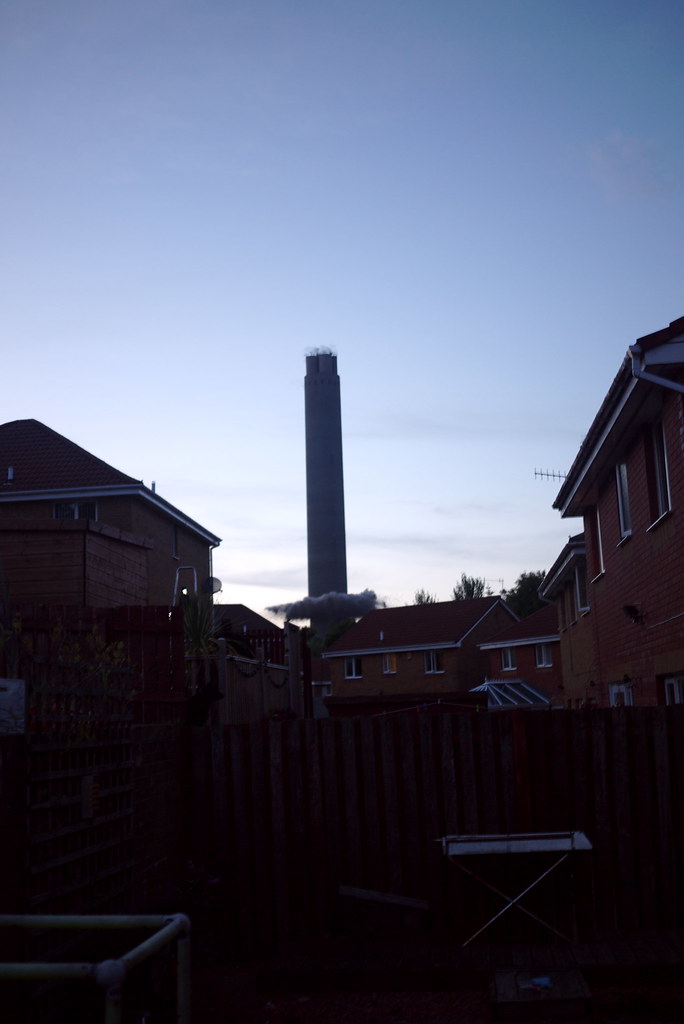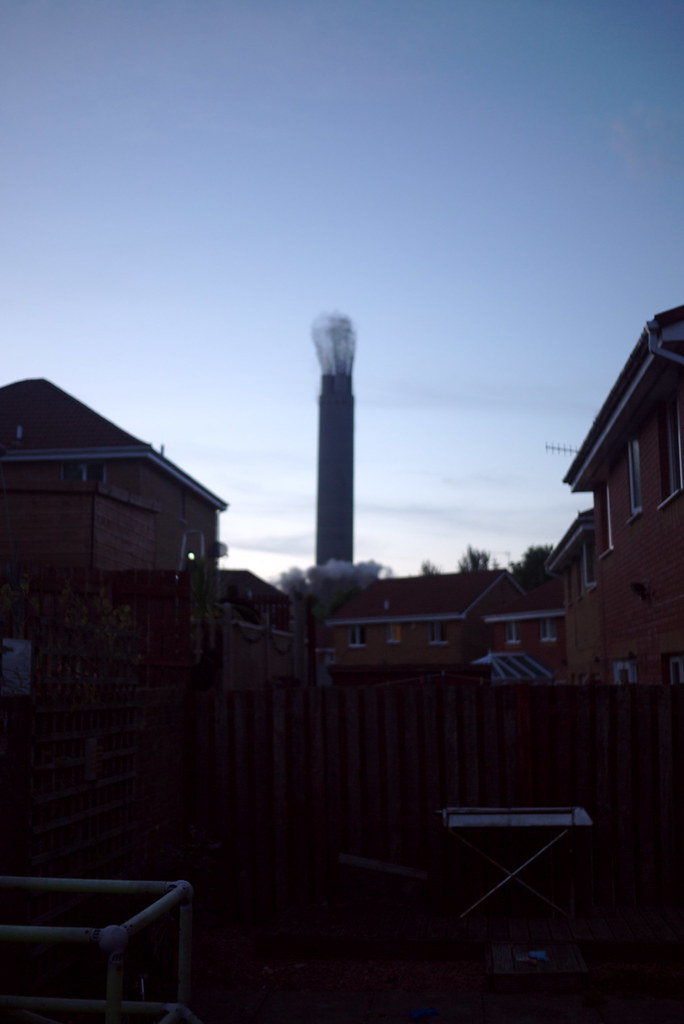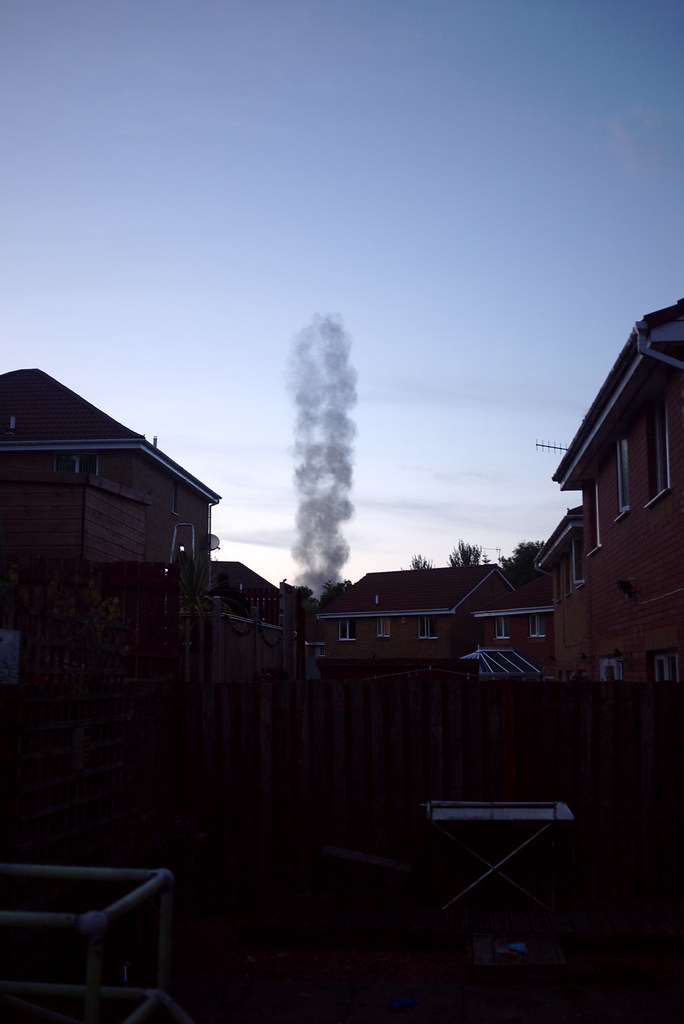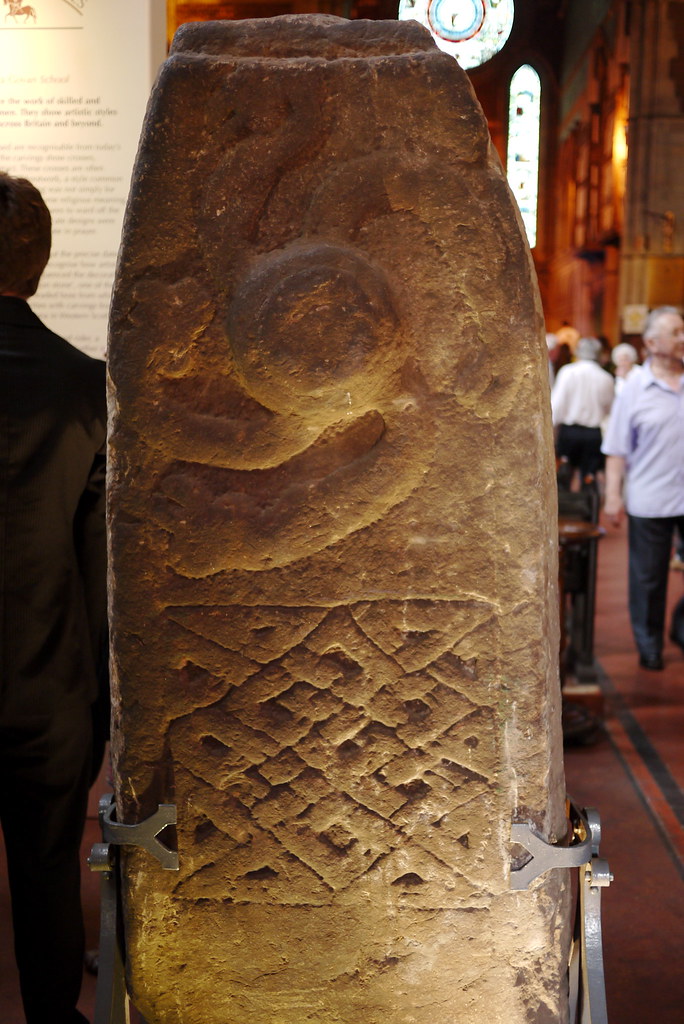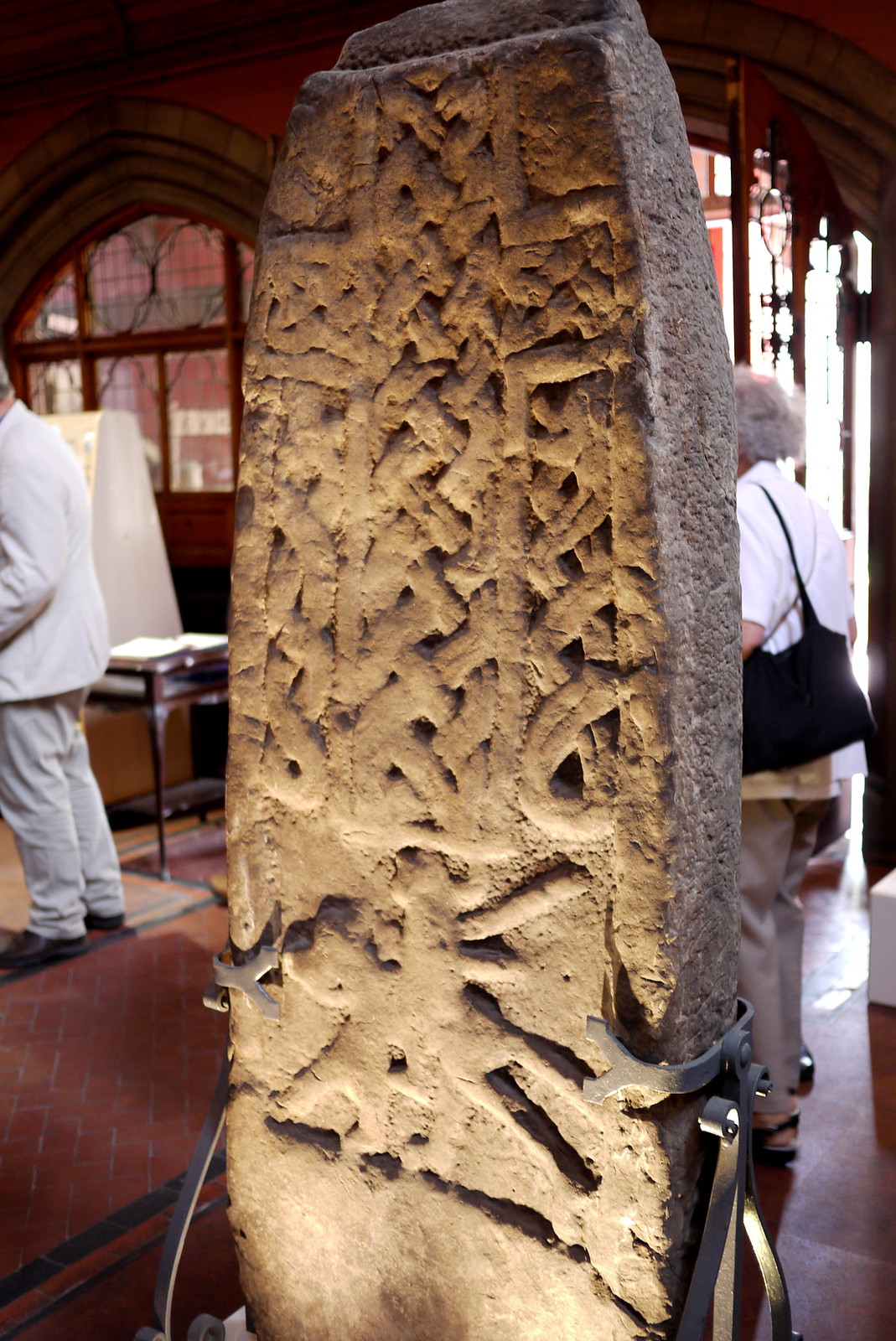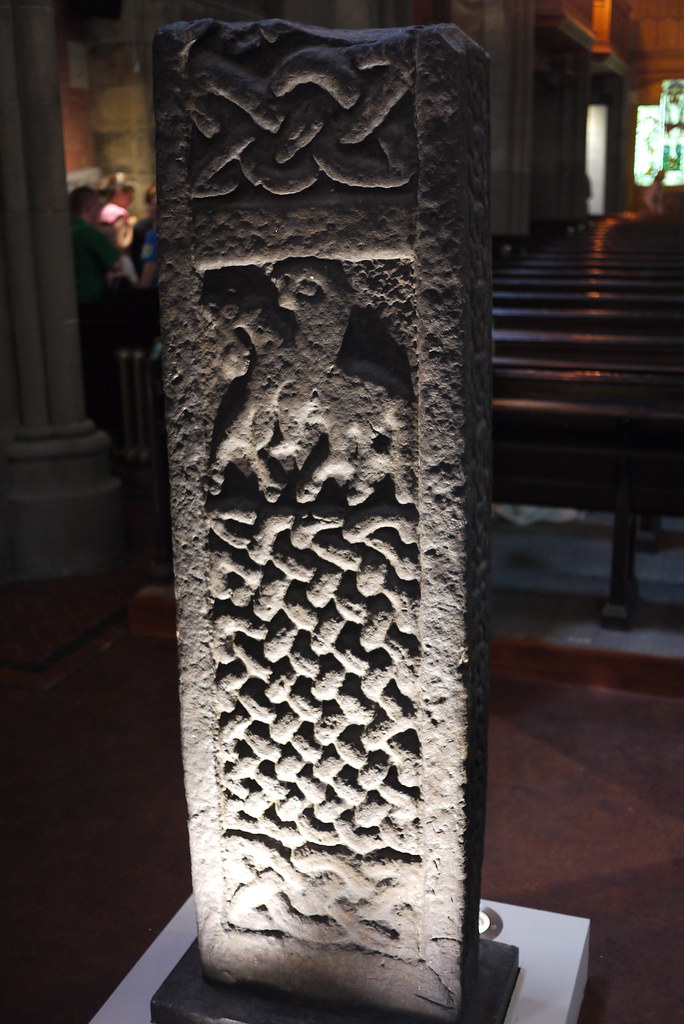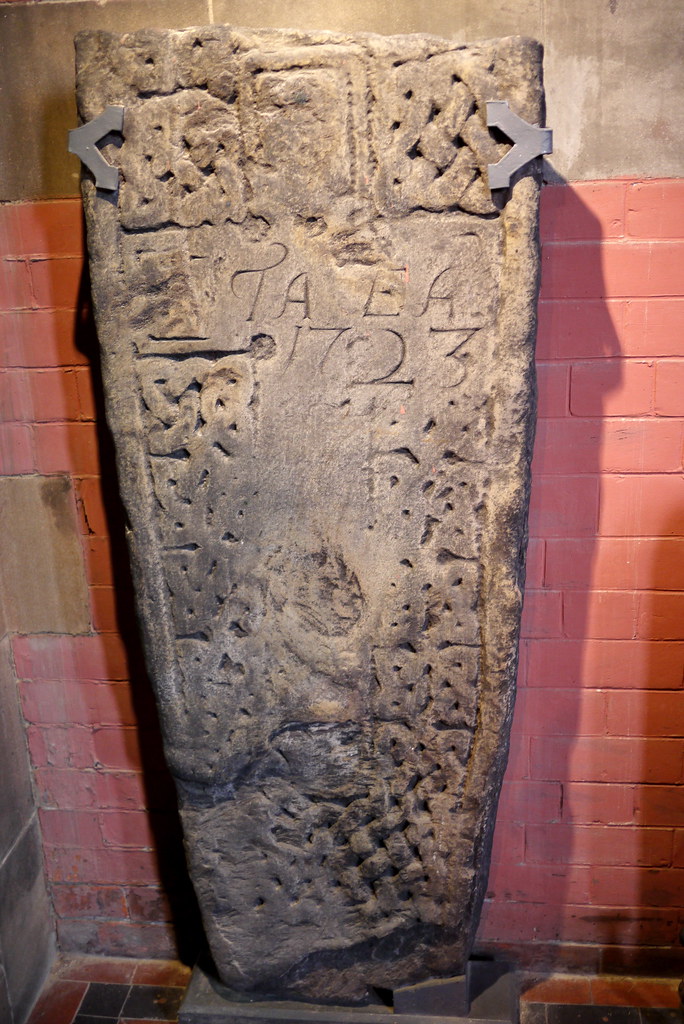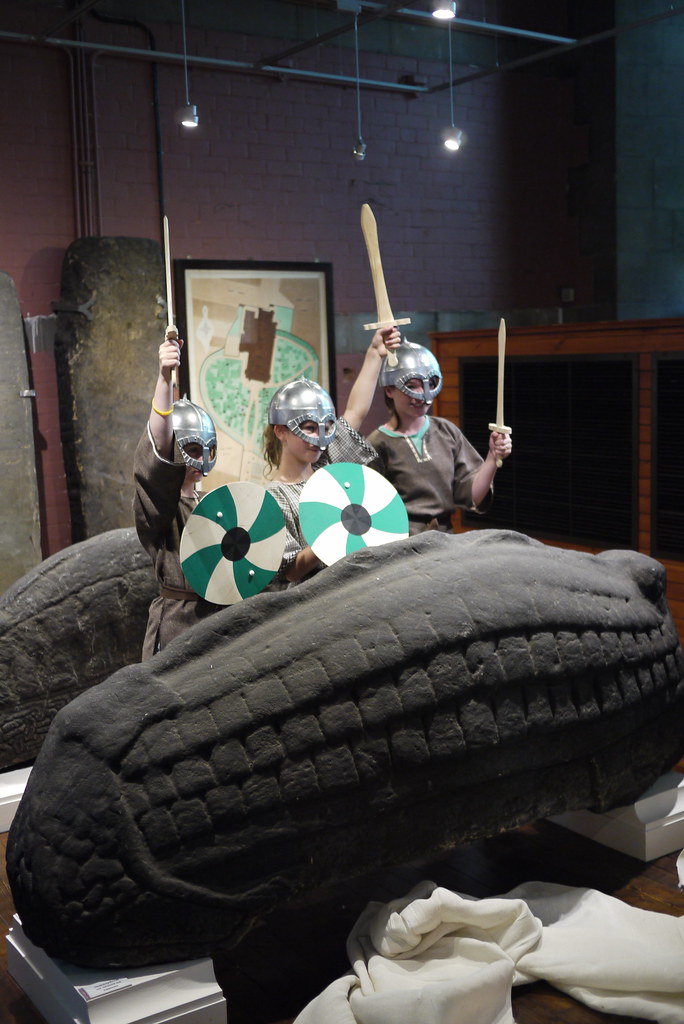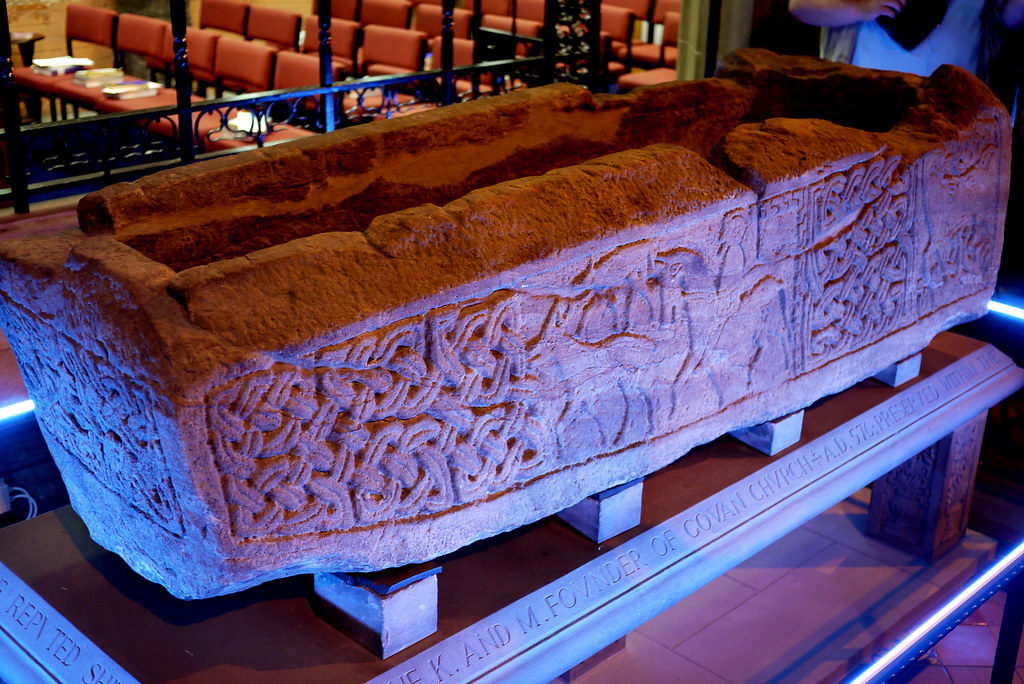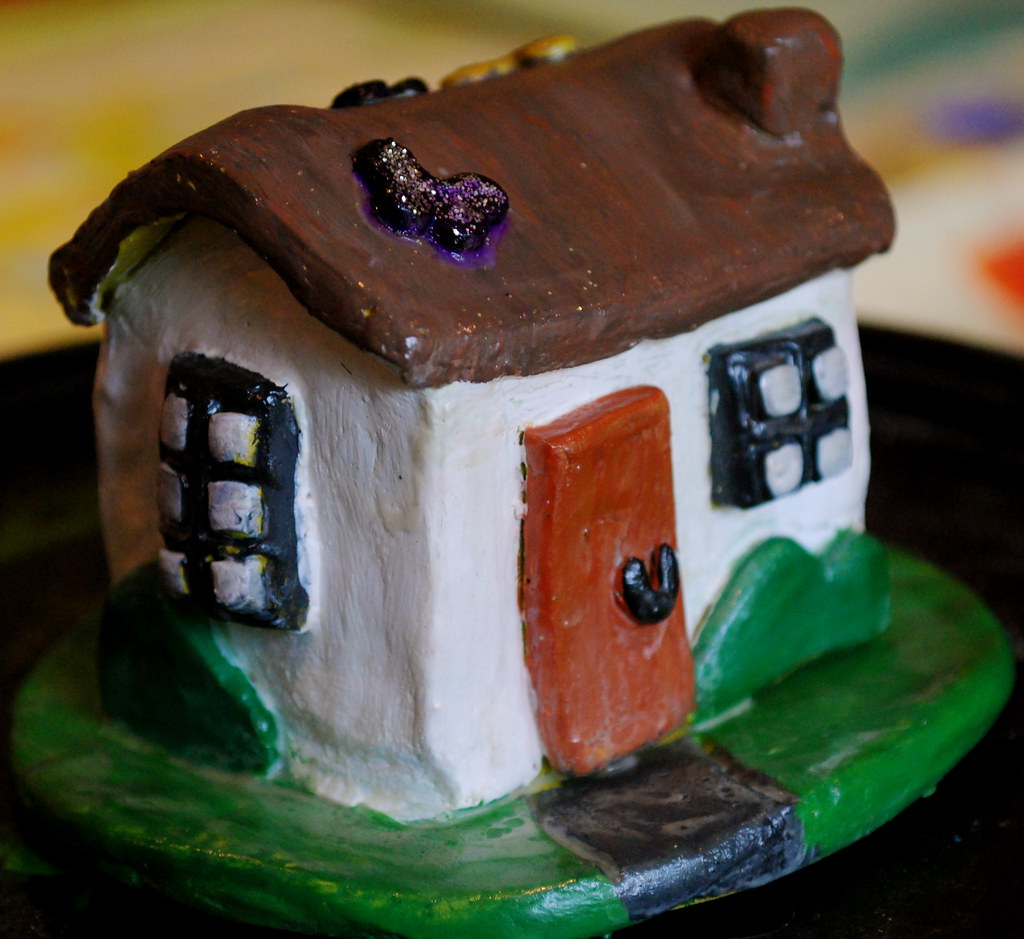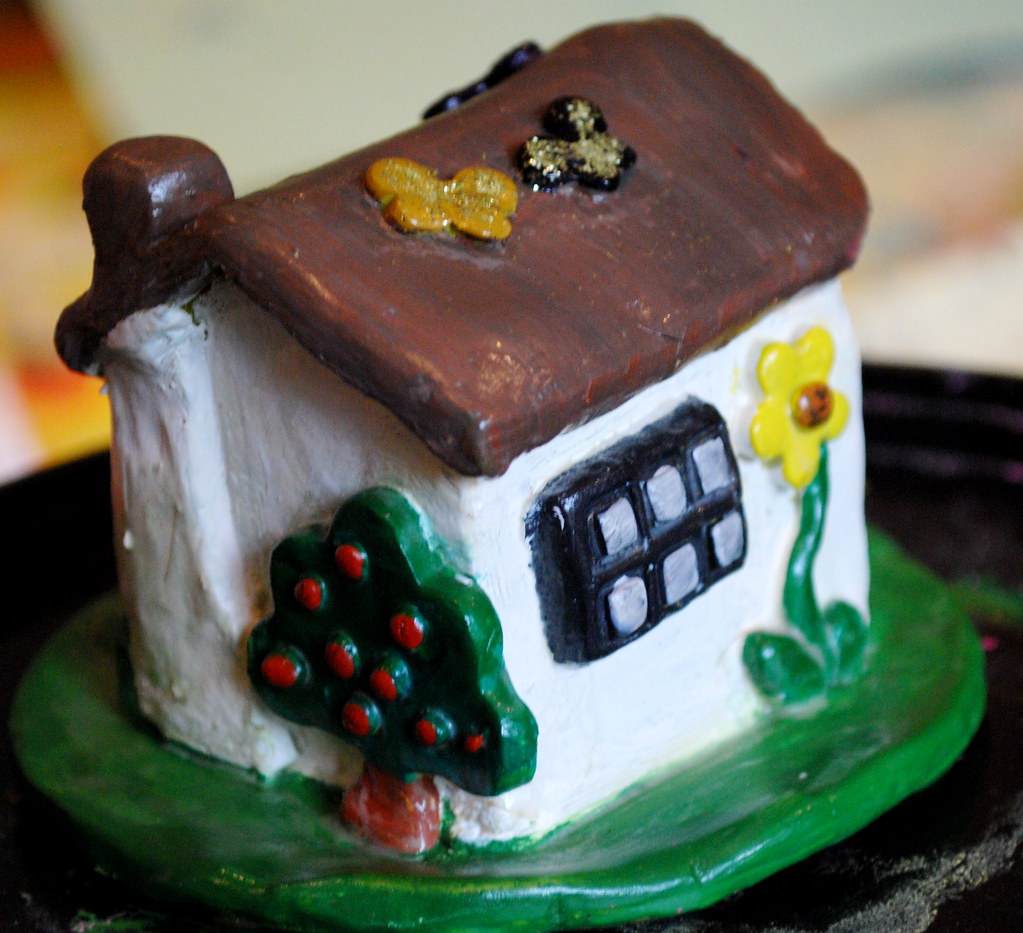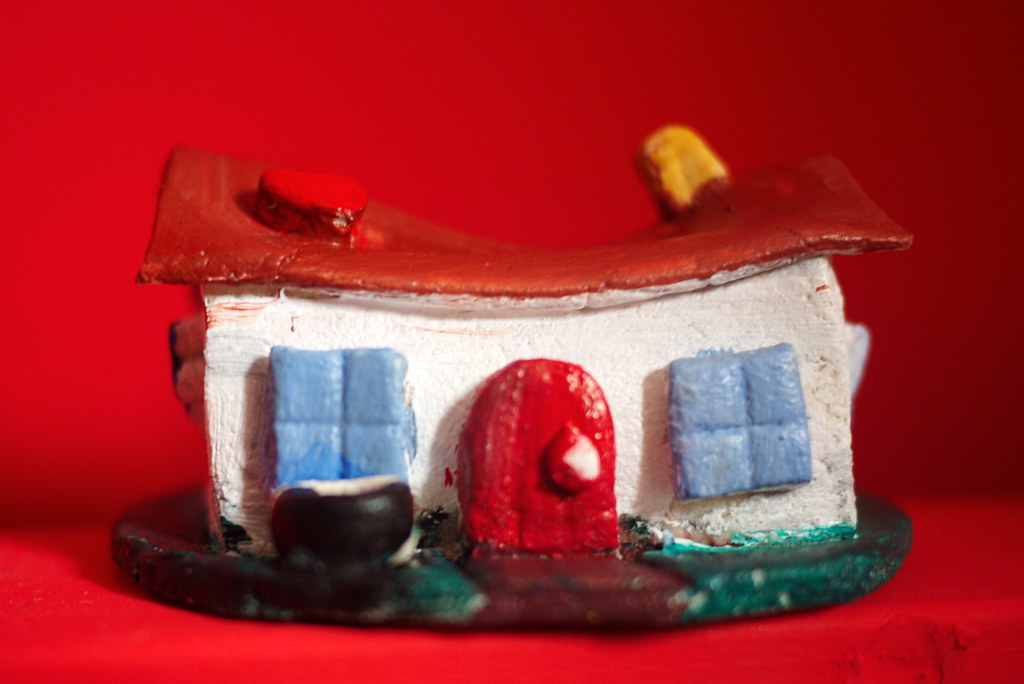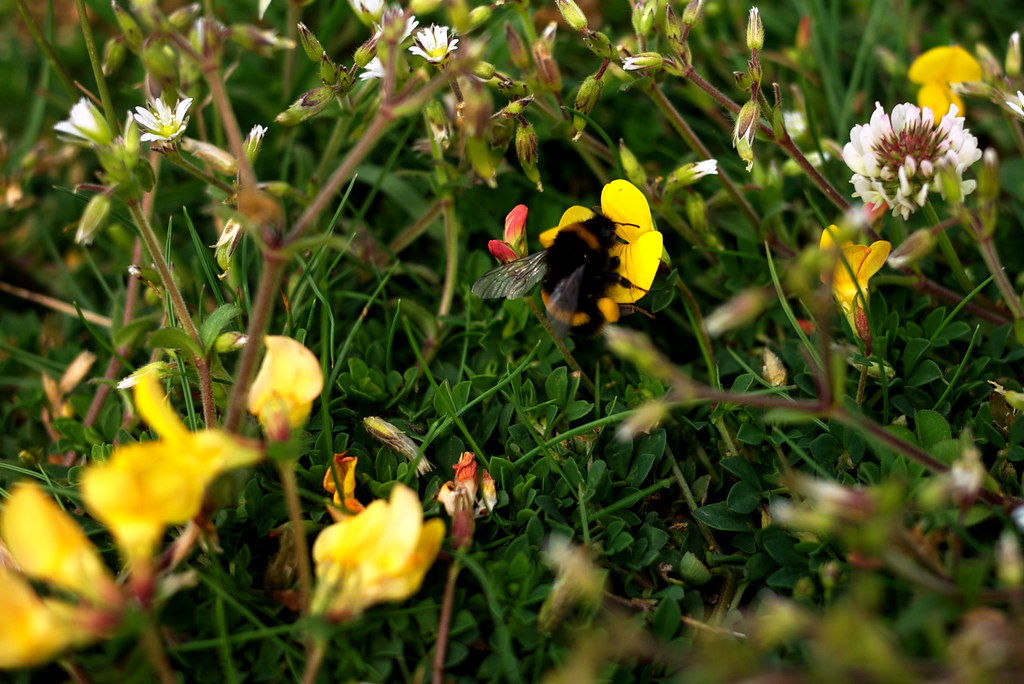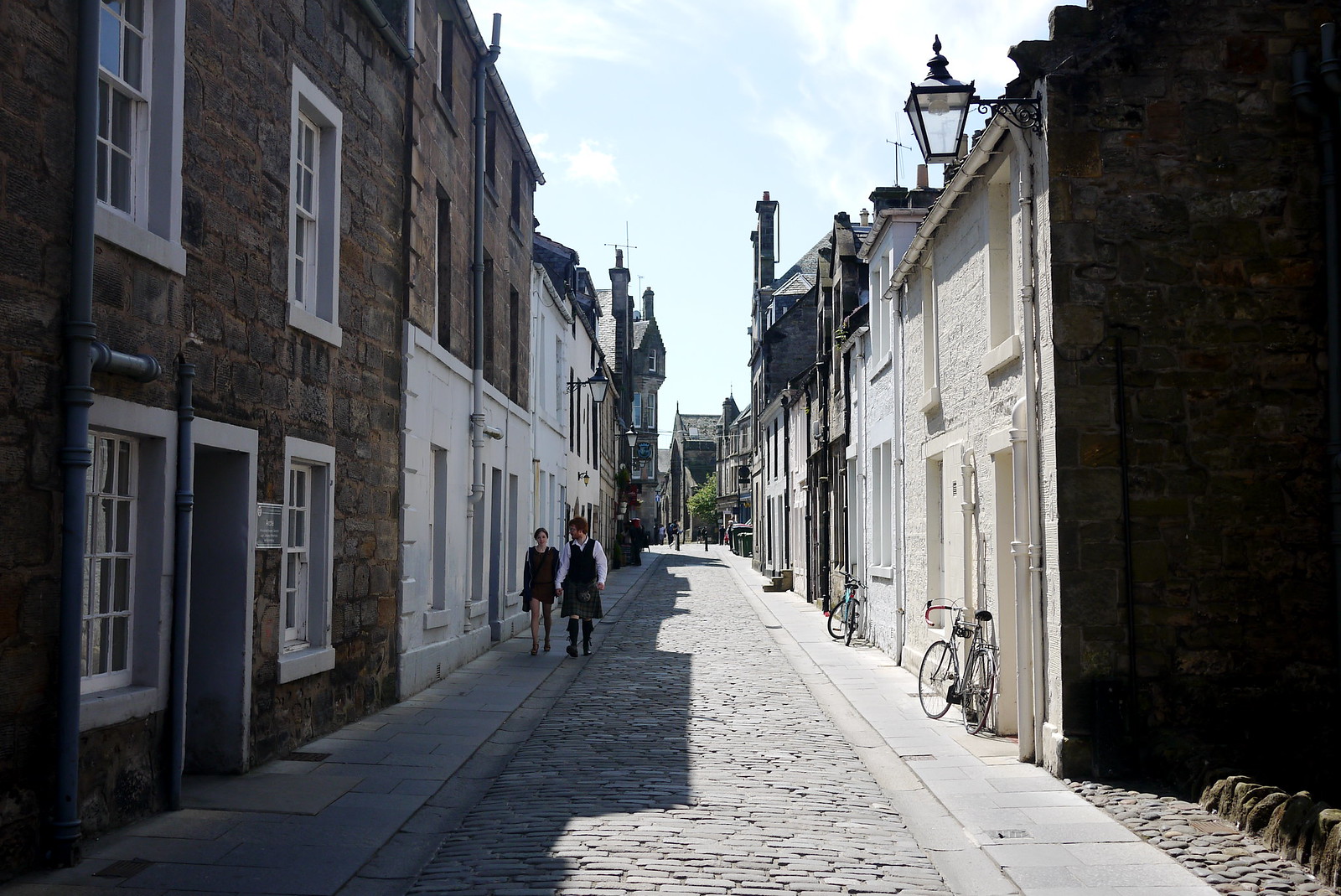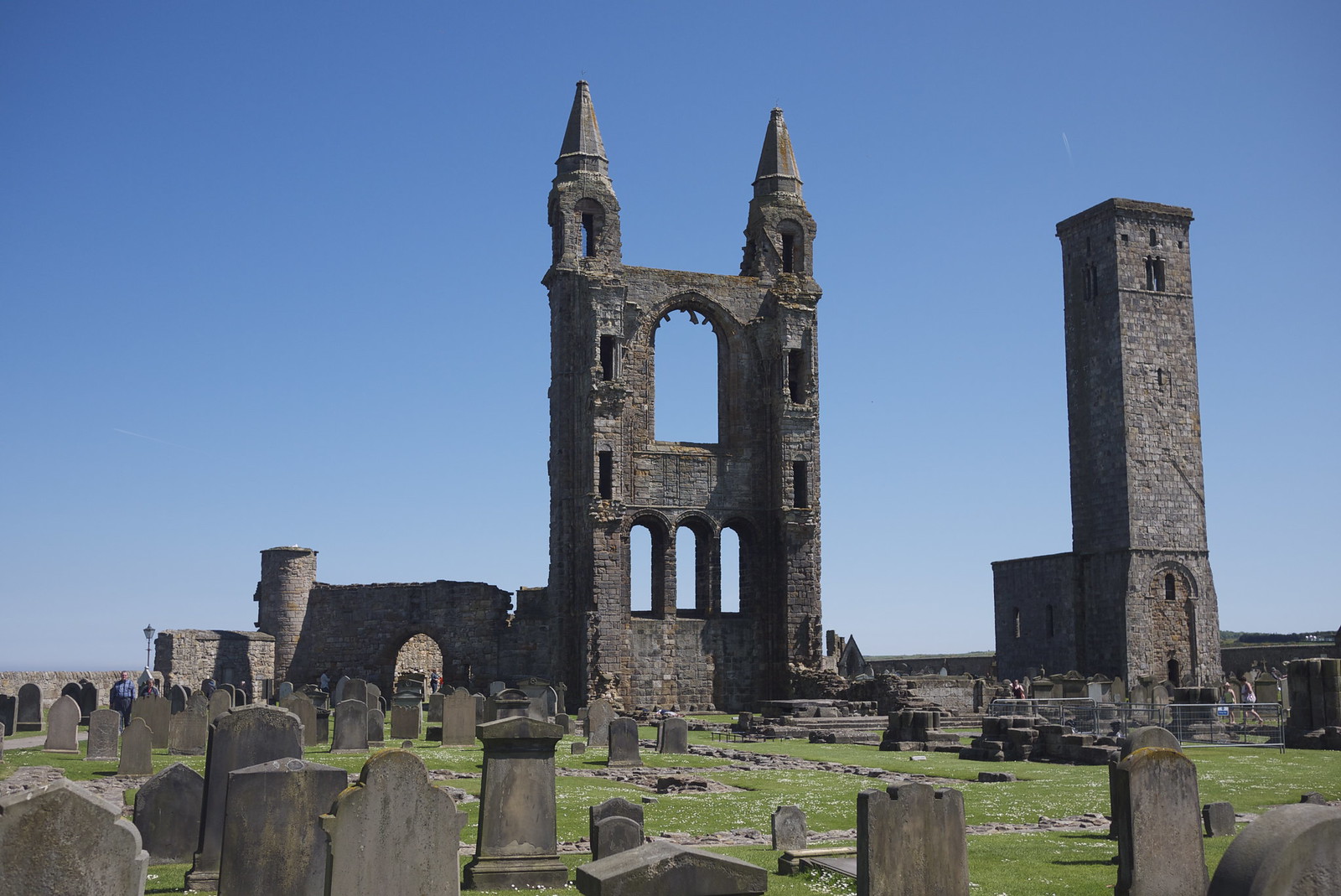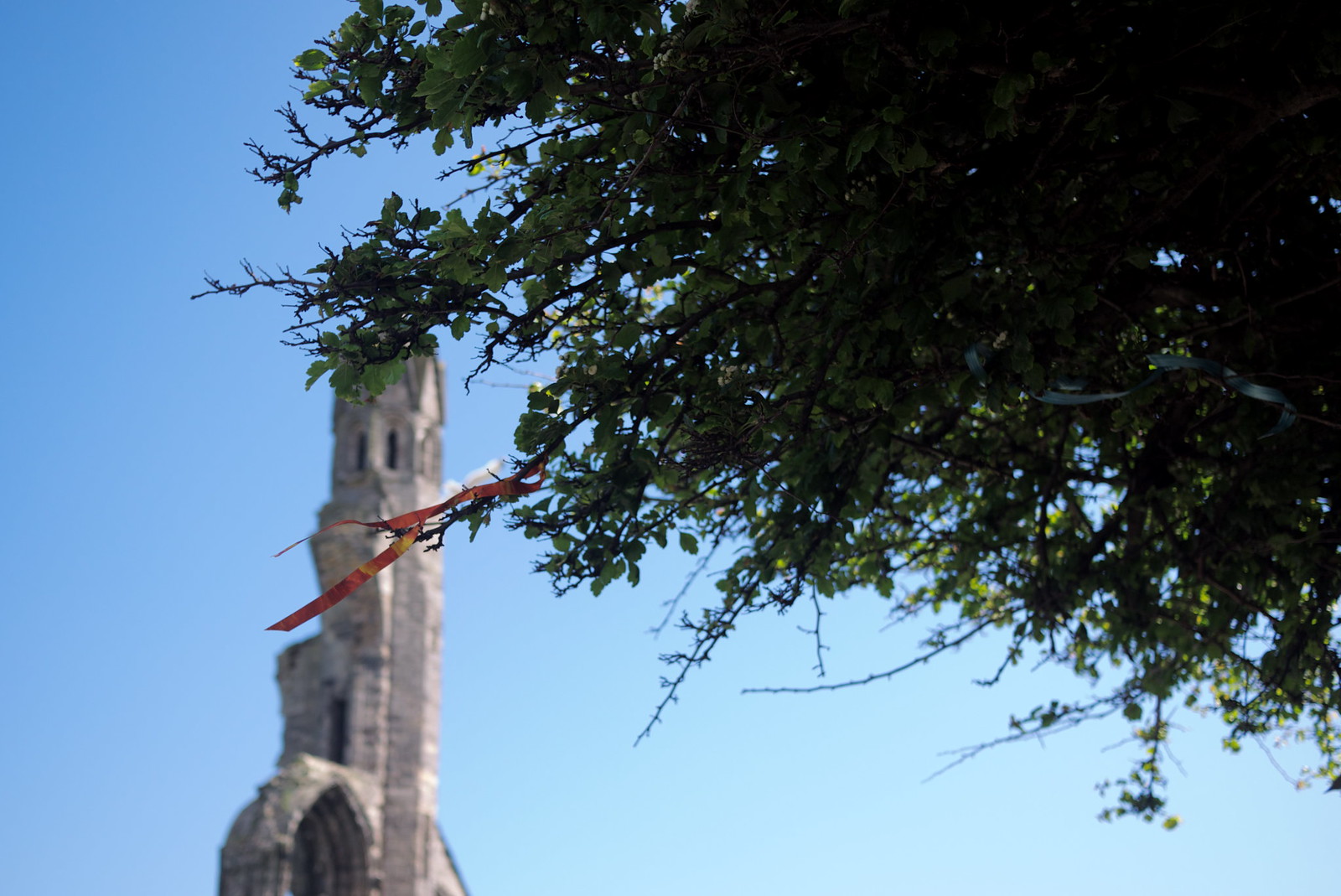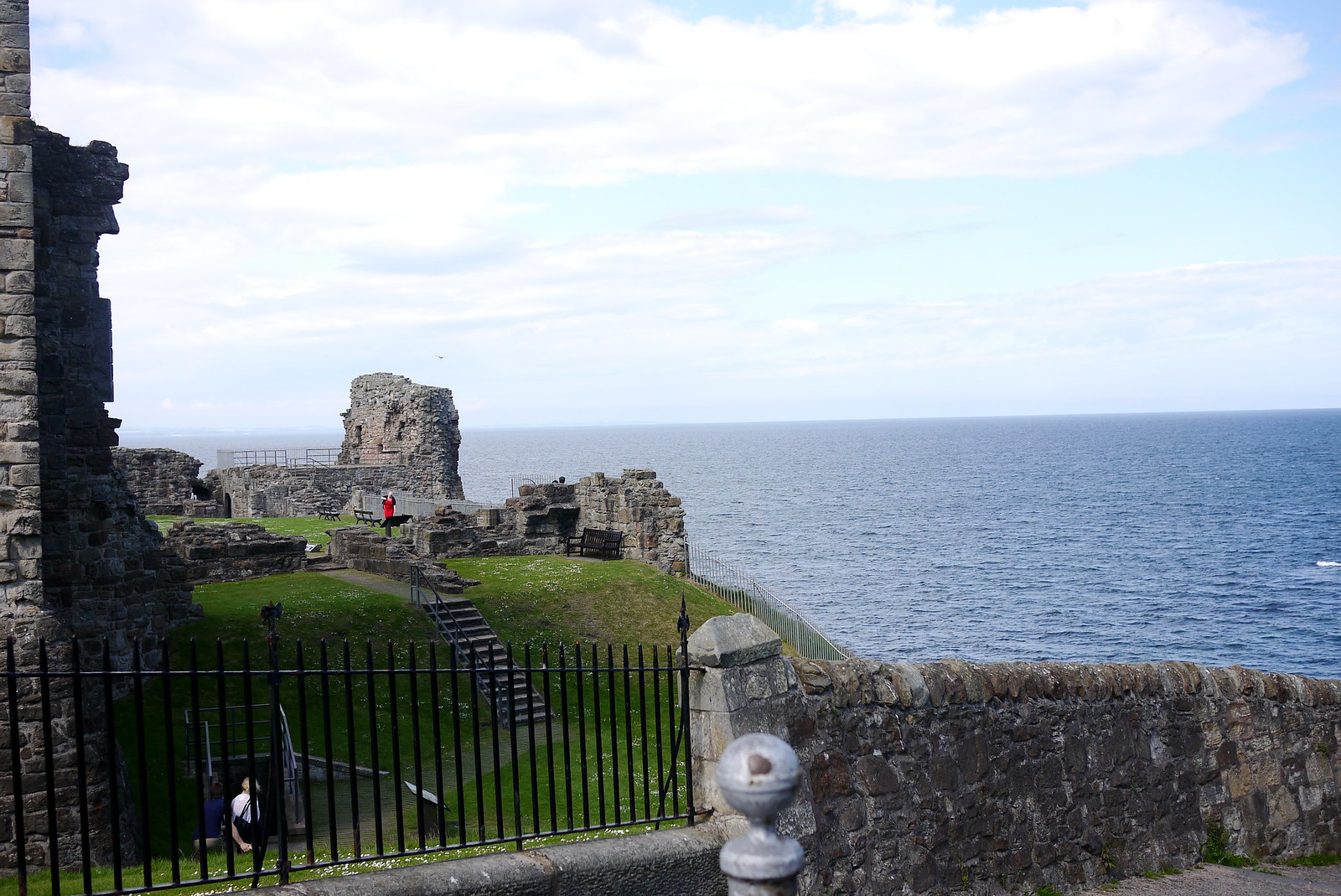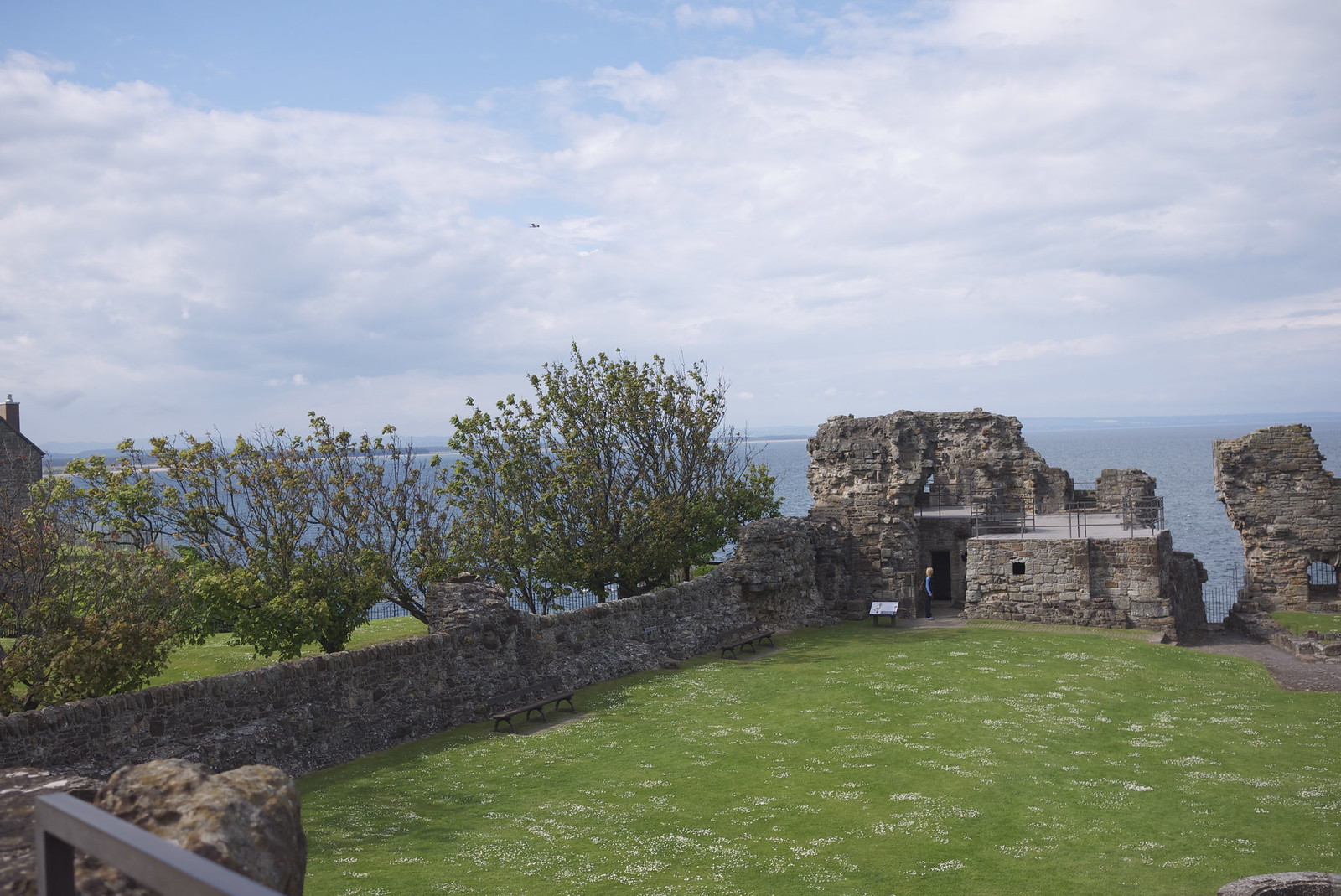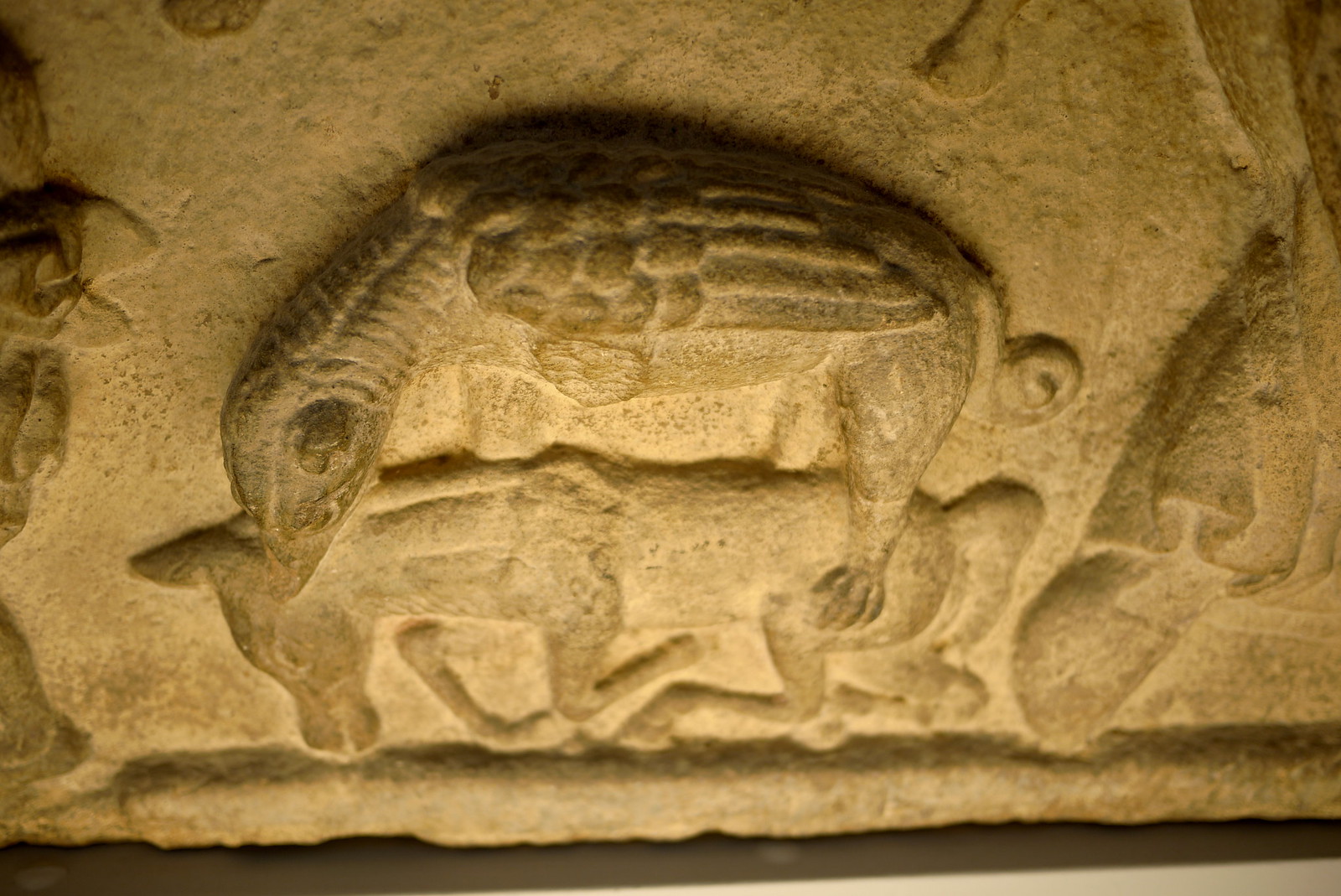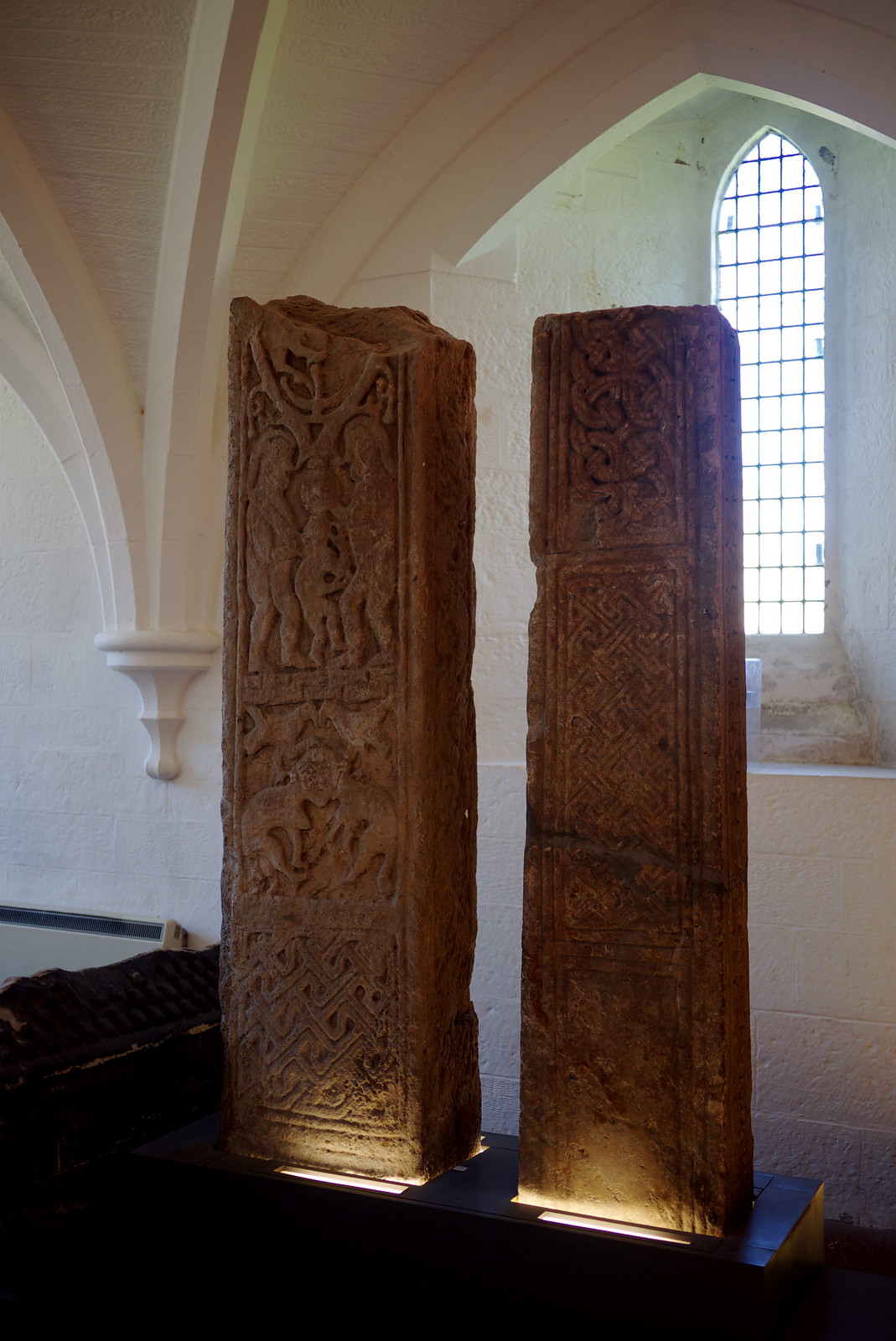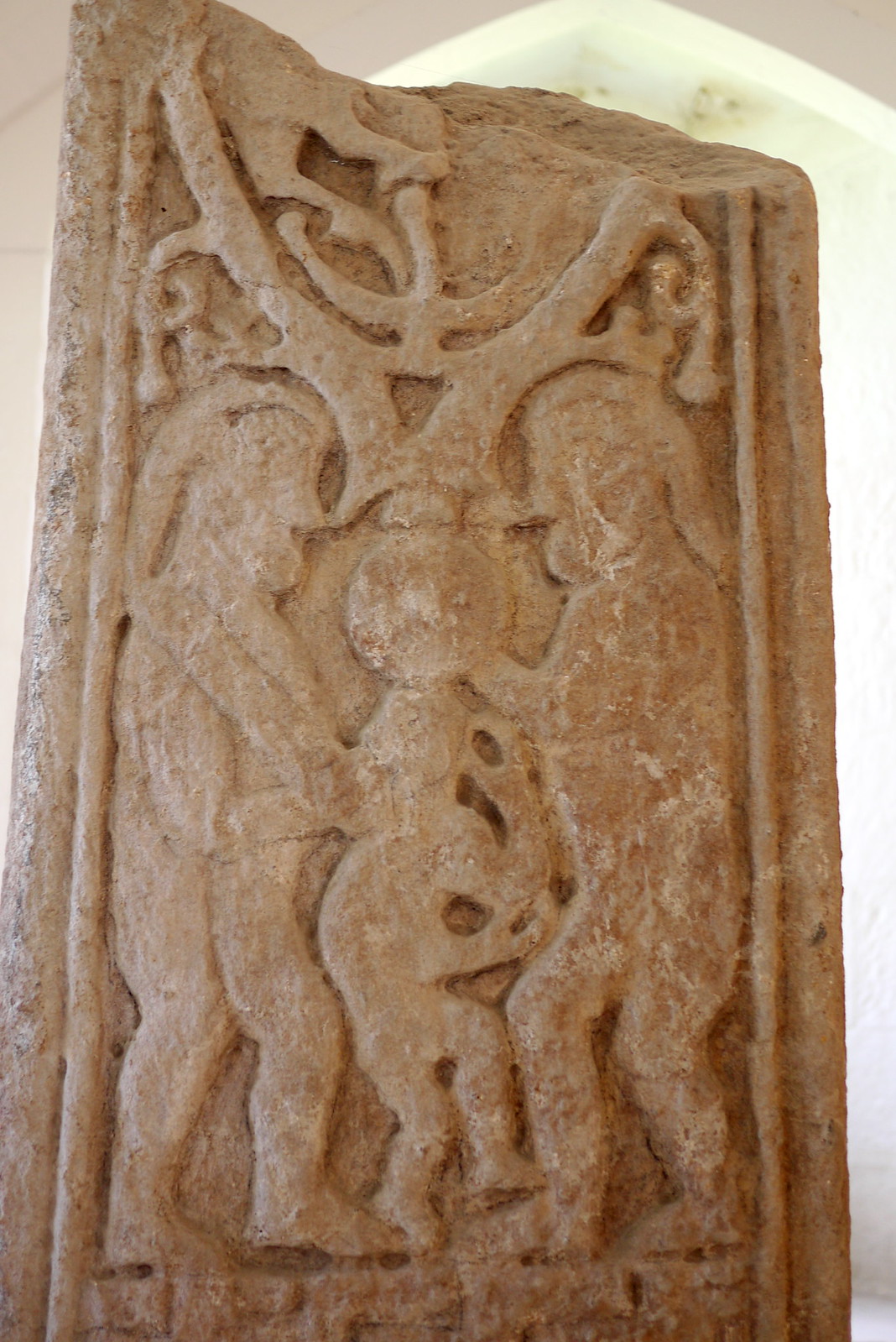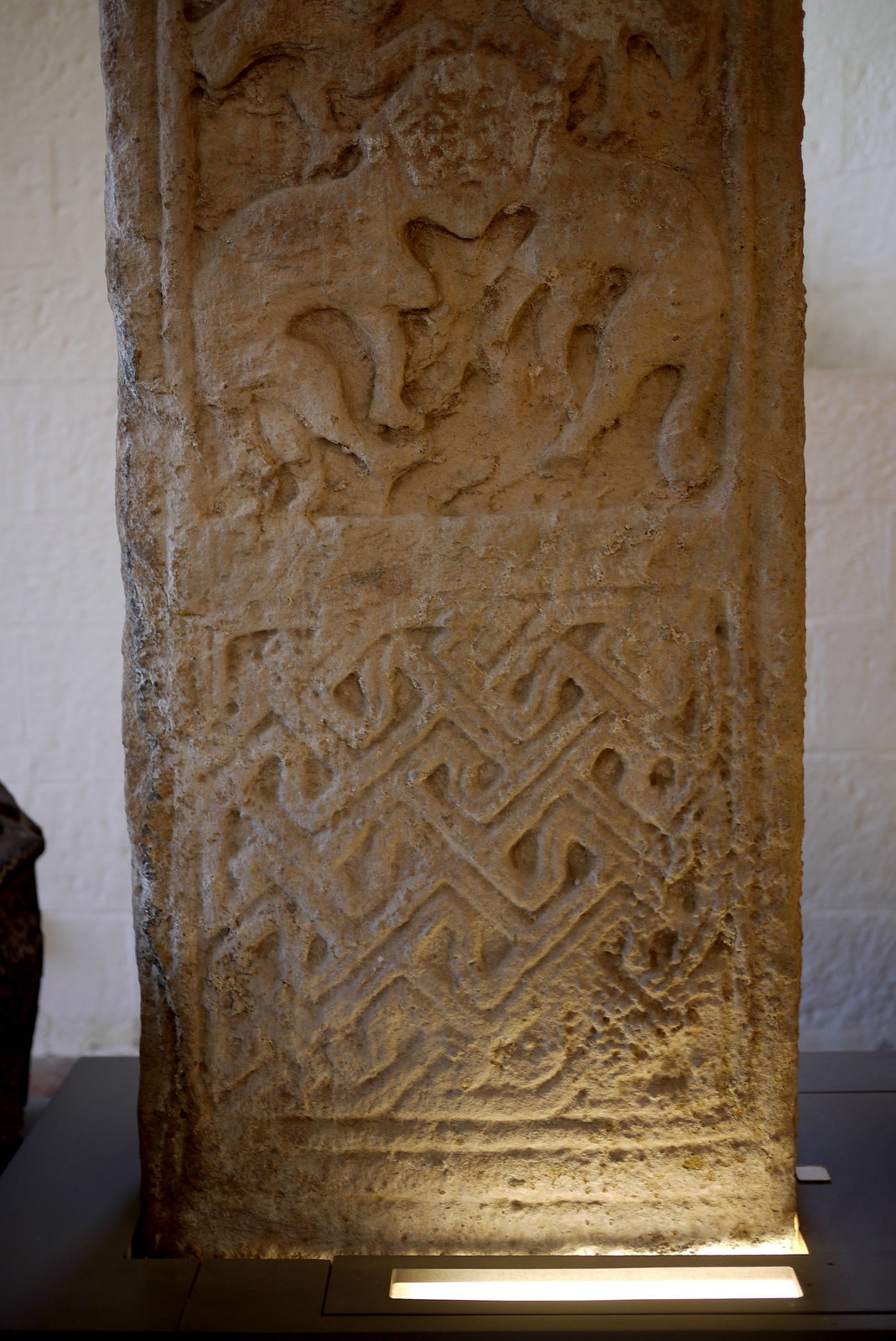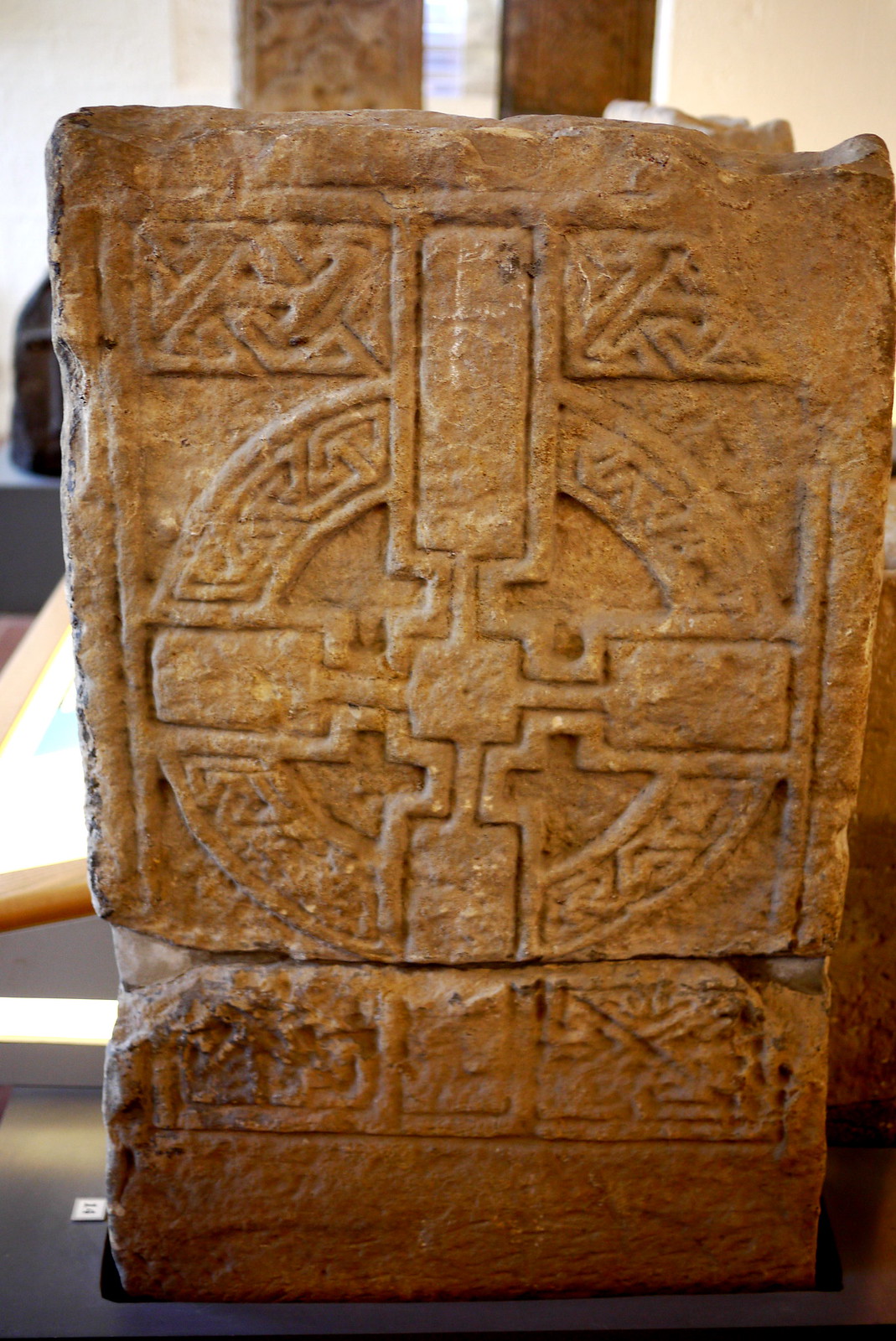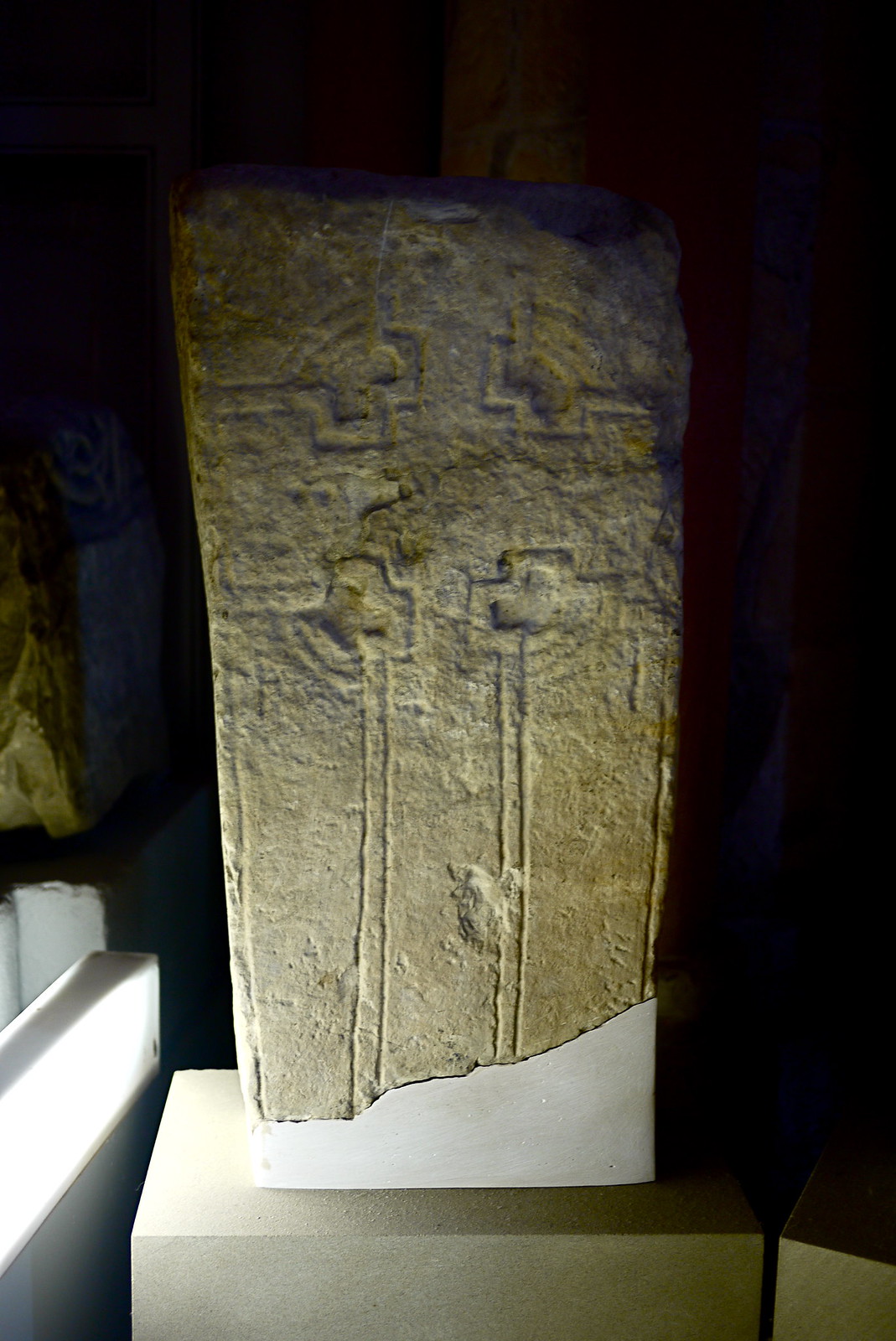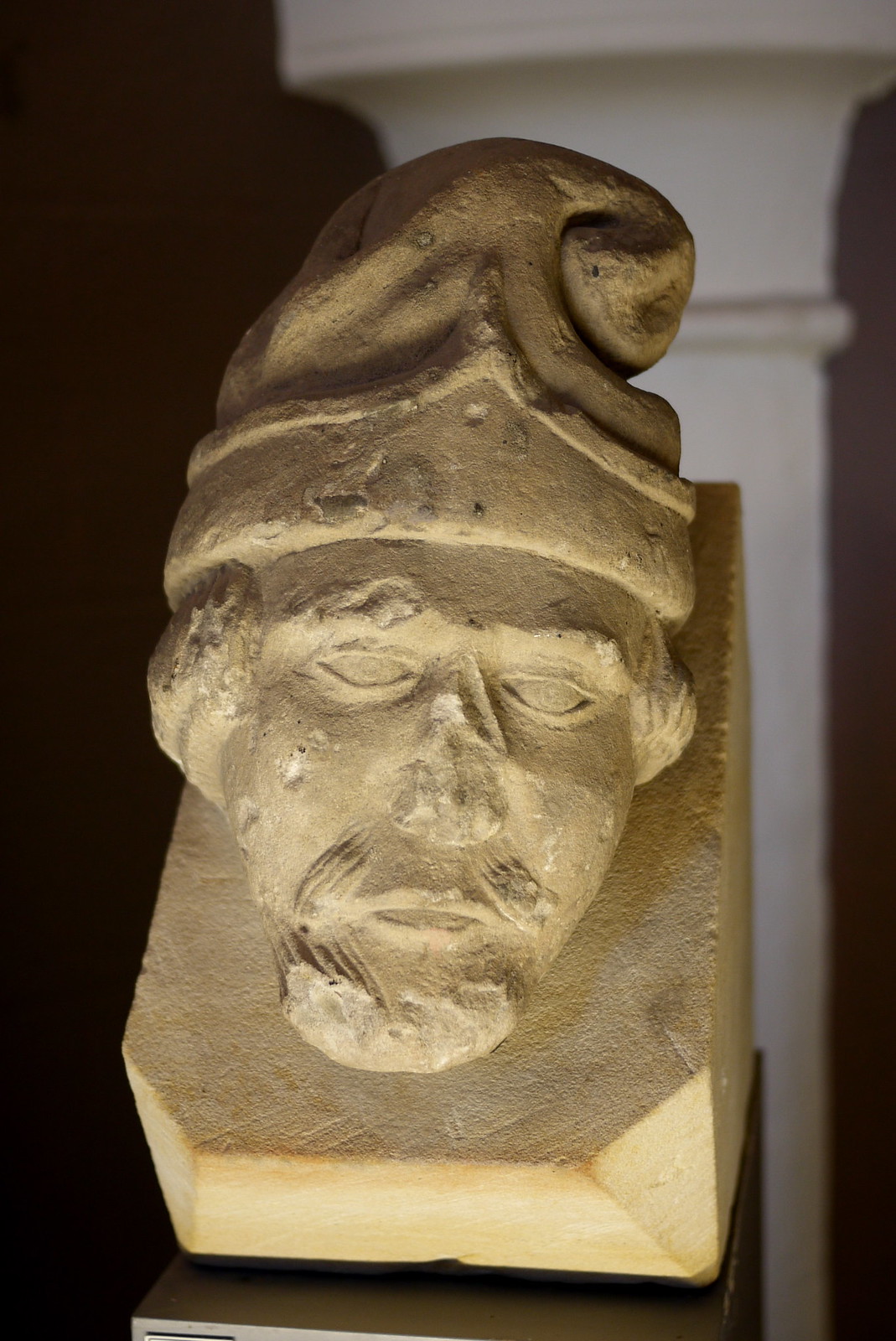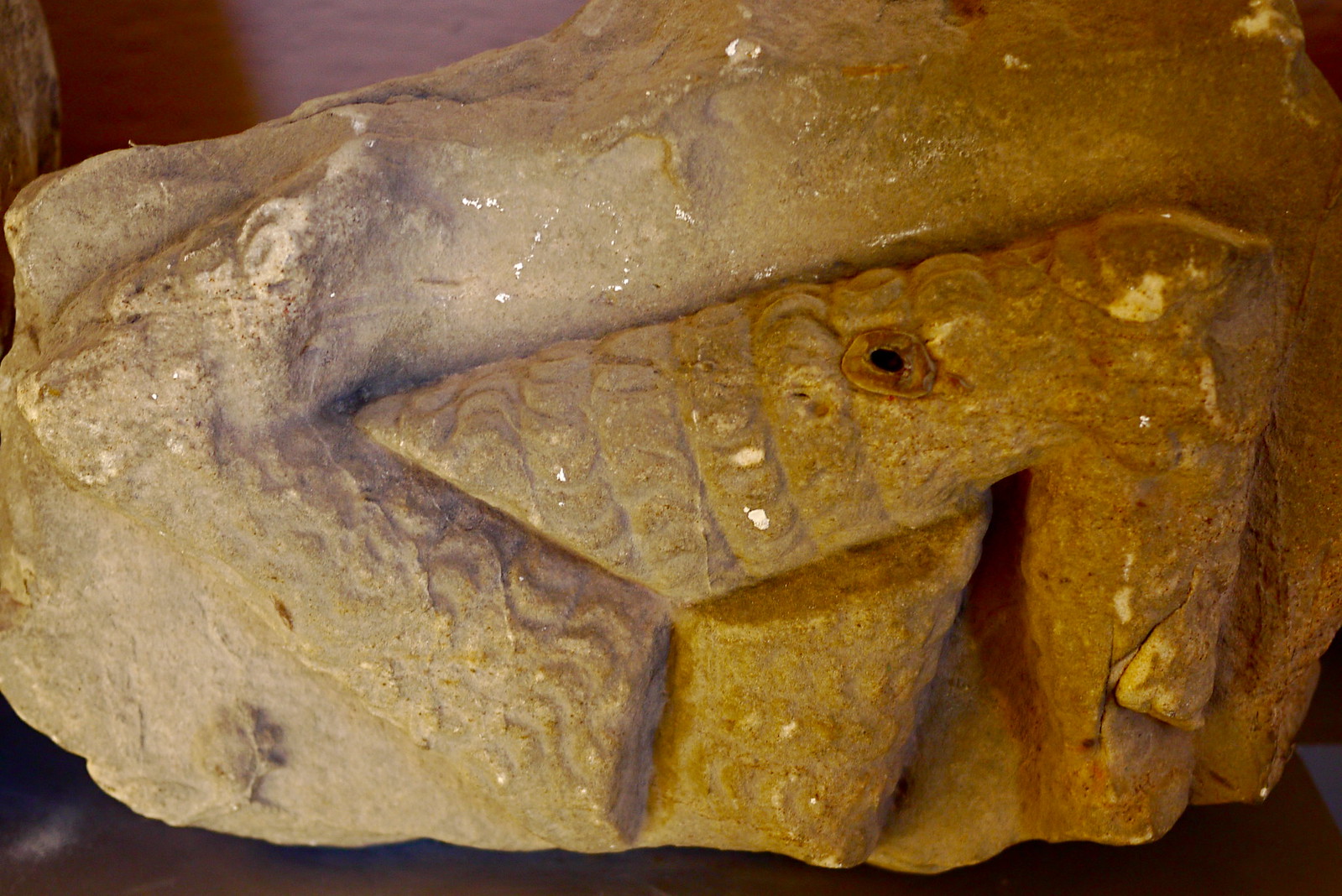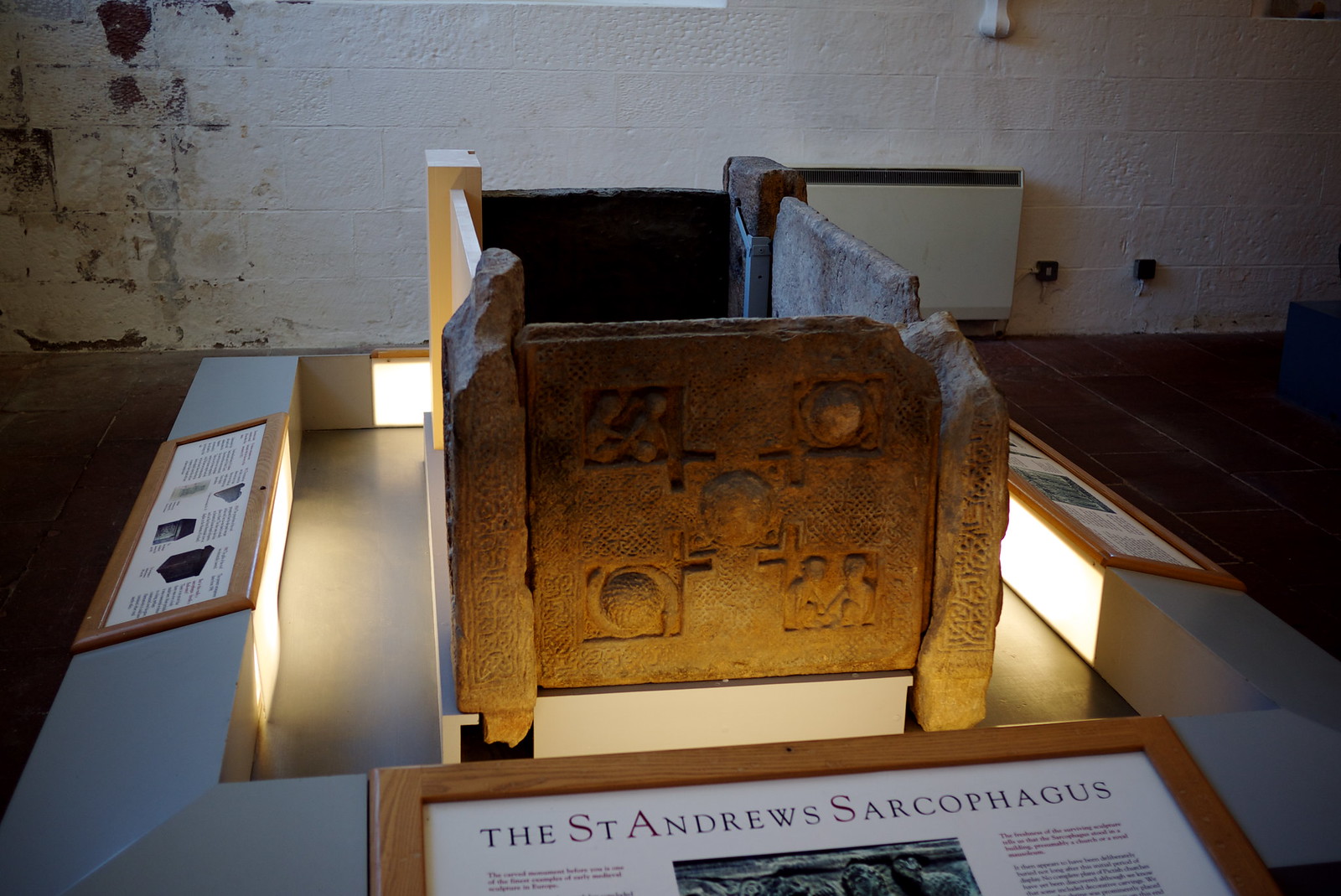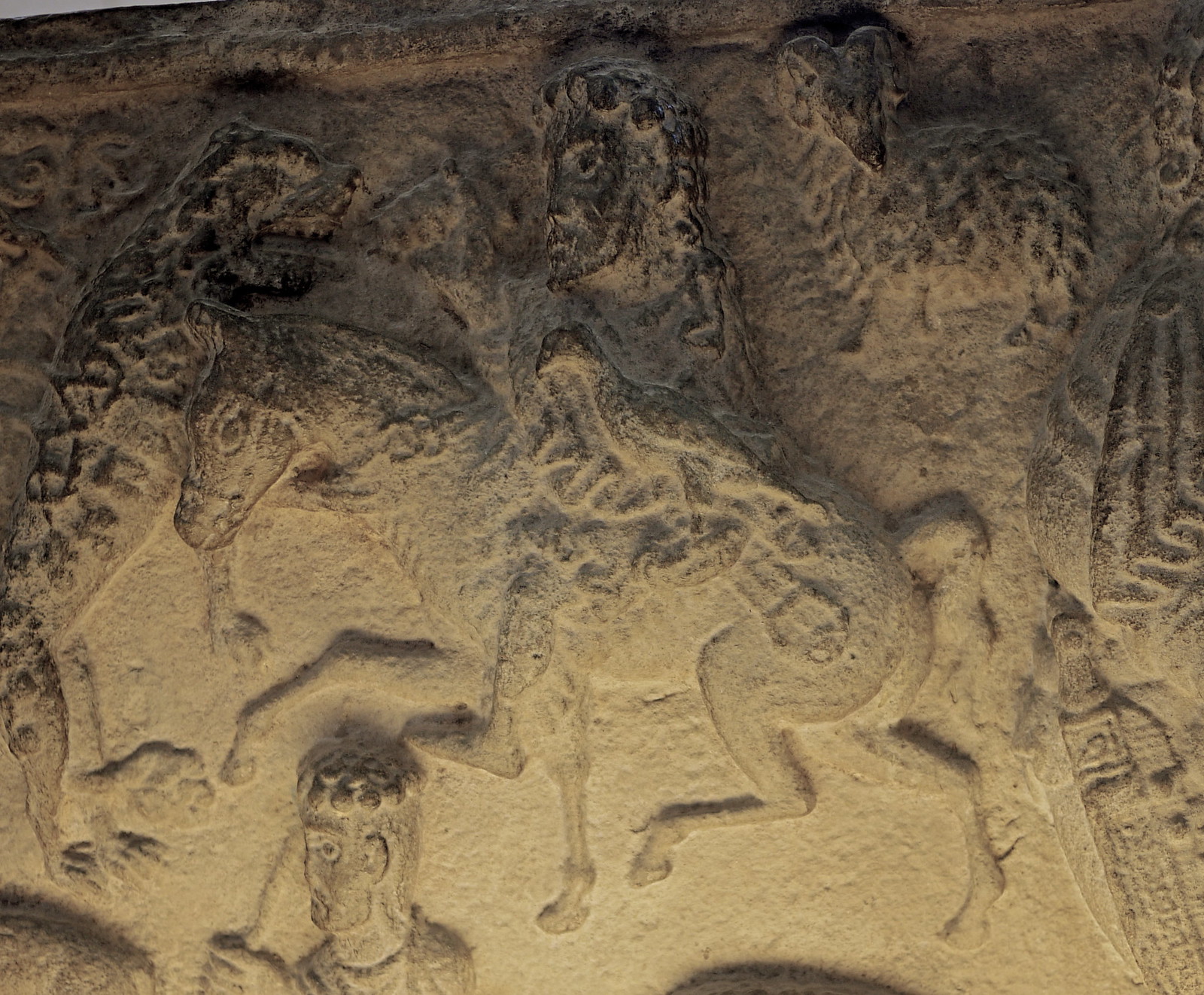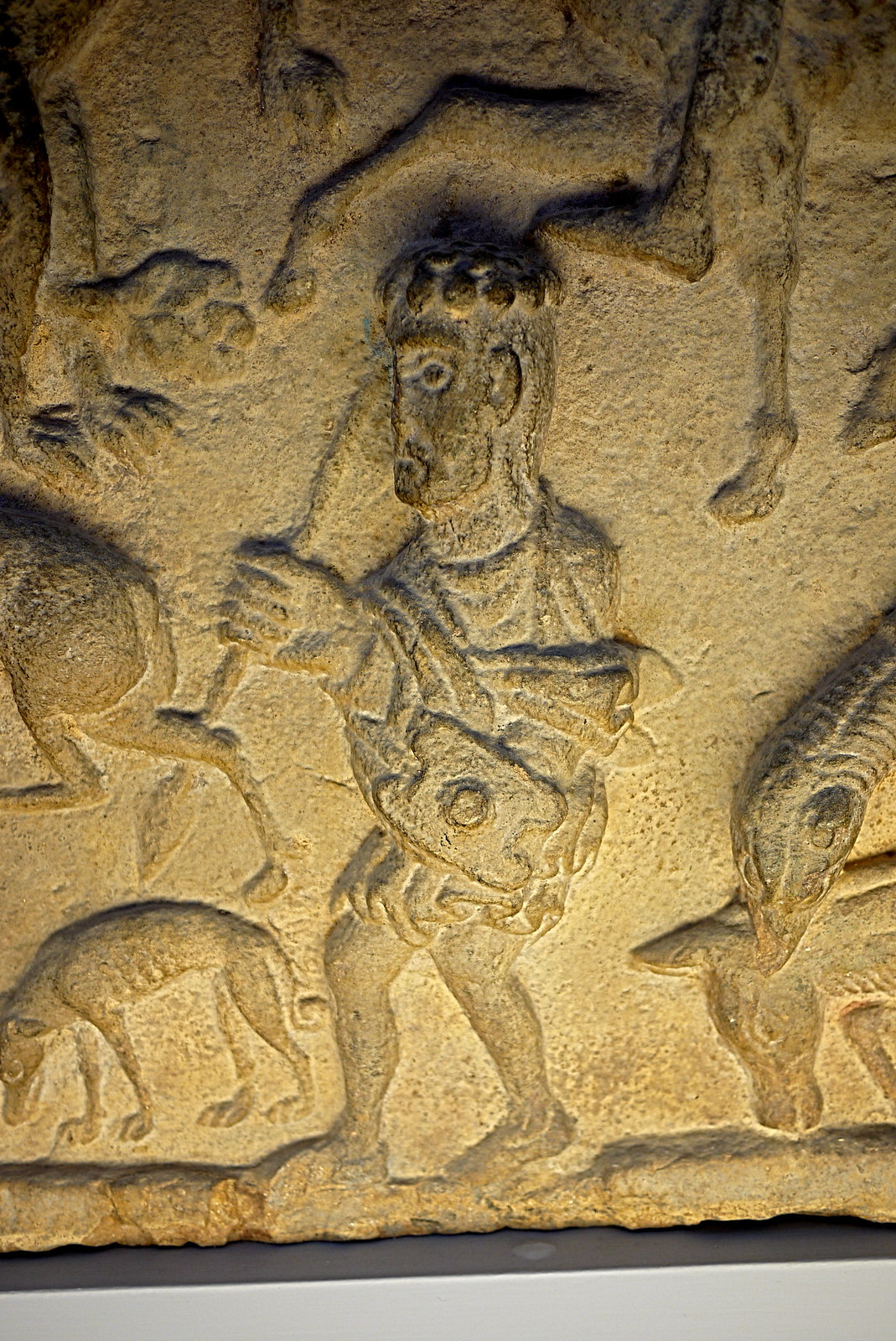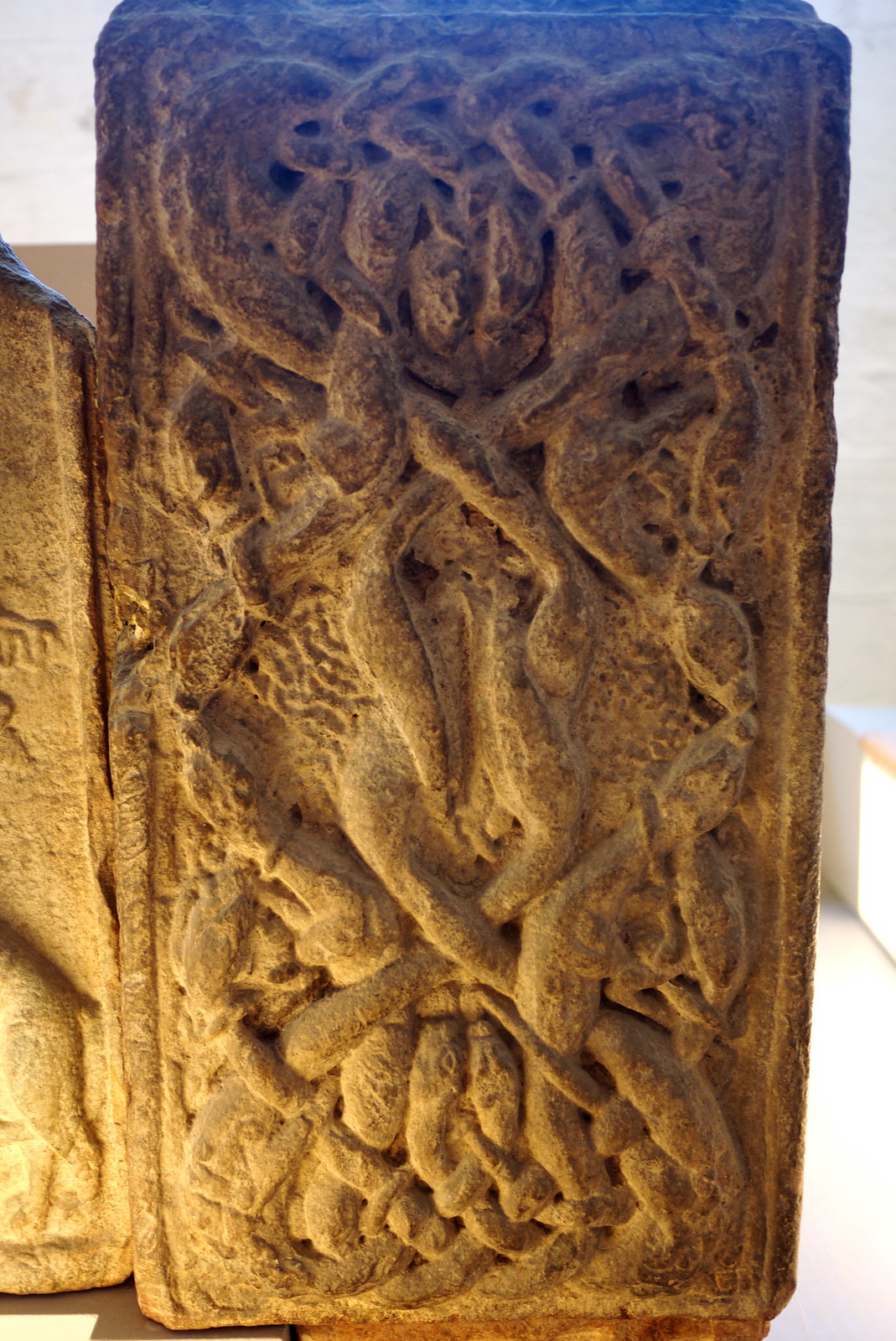The Holy Wells of Ireland
Patrick Logan
I've read a couple of books by the same author before now and those are well worth taking a look at –one called Irish Folk Medicine, and the other called The Old Gods: The Truth about Irish Fairies. Logan is a great author and a medical doctor by profession, so in both this book and the Irish Folk Medicine volume he has a lot of expertise to draw on when it comes to the folklore of healing.
The Holy Wells of Ireland isn't a hefty tome but I think it's fair to say that it covers all of the basics – the typical locations that wells can be grouped under (on the seashore, mountain or hilltop, bogs, churches, and wells that move), legends associated with them, pilgrimages and rituals associated with them, and the kind of purpose they're used for, the kinds of offerings that might be left, and the kinds of trees or animals associated with them, too. These are all dealt with in their own chapter, so it's well-laid out and the repetition is kept to a minimum – always a plus if you just want to pick at it for research.
It should be said that while detailed descriptions of some of the rituals associated with certain wells are given – the timing, the number of rounds made, walking barefoot or on the knees, the kind of offerings left, and so on – you won't find much in the way of details about the liturgy used in the rituals. If that's what you're hoping for you'll be disappointed, I'm afraid, but that's because it's basically all thoroughly Catholic. An outline is given – the number of stations or decades that should be done, the point at which the Creed is recited, etc. – and I have to admit, not being raised Catholic I only had a vague idea of what these mean (until I asked my husband). Although Logan is quick to point out where there are appearances of pre-Christian elements, and how it can sit uncomfortably in the Christian landscape, that's about as much as you're going to find.
This book is a good introduction to the subject, but it's not as in-depth as it could be, which is a plus and a minus. It's not too dense, but sometimes it's a little superficial in its coverage in places. In particular, although the seasonal pilgrimages to holy wells at times like Lúnasa are talked about, I think it would have been better to have added a little more context to the timing of the visit and how it fits into the traditional calendar, and so on. I would expect that most people who would read a book like this would already have an idea of that kind of thing so it's maybe not such a big deal, but having a bit more meat would have given a more thorough discussion of the subject, perhaps. Having said that, I think it's also fair to say that presenting the seasonal visits in the context of a wider practice associated with holy wells is also useful, and sometimes over-looked. The special occasions they were visited may have been when they were considered to be at their most powerful, but that doesn't mean they weren't considered to be useless at other times.
Although (as with his other works) there aren't exhaustive footnotes and citations, he does at least give passing references throughout the book, and there's a bibliography too. Many of the sources he draws on are now easily found online, at places like archive.org, so the book is going to be very useful if you're wanting to dig a little deeper and that helps to make up for any areas that aren't as detailed as you might like. Also useful is the fact that Logan discusses the context of his sources, and makes the point that although many of the sources are disapproving of the rites and rituals they describe, the more "hostile witnesses" often go into more detail than someone who is more sympathetic. In that respect, sympathetic witnesses may have had a tendency to gloss over the more uncomfortable "pagan" elements of practice and give less detail, while the hostile witnesses were more willing to emphasise them in order to underscore their bias and feelings about it. The latter is often more useful to us, even if the writer might over-emphasise or even embellish at times, or just spend a lot of time disapproving about stuff rather than getting on with it, but it's ultimately up to the reader to assess this kind of thing. This is a very useful point to make, and when referring to a source Logan makes clear whether or not he thinks the writer is hostile, which helps the reader interpret the information being given.
In terms of its "usefulness" as far as providing inspiration for practice might go, I think this is a good supplement but not so much a must-have for the bookshelf unless you're particularly interest in healing as a speciality. I can see myself referring to it every now and then, and it's a damn sight more convenient than trawling through archive.org to find the right antiquarian book or article (and it gives an idea of things that have survived to the modern day, and things that haven't, which the older sources obviously can't tell you), but all in all it's never going to be as well-thumbed as my favourites.
Even if it's not essential, there's some interesting stuff here, especially in relation to the instances of fish (usually trout, usually considered to be immortal or A Very Bad Sign if they die) that are found in some of the wells. This offers some food for thought as far as cosmology goes (the well of Segais, for instance), and the chapter on trees associated with wells will surely be of interest to quite a few folks as well. I would definitely recommend it as an easy and engaging read if this is your kind of thing. It's maybe one for the bookshelf when your book budget has snapped up the more essential items on your reading list, but it's worth a look at some point and it's cheap to buy second-hand. That's always a plus.
Monday, 2 December 2013
Wednesday, 13 November 2013
Saying goodbye
Holding an impromptu funeral for a hamster wasn't exactly something I had in mind for the weekend when I got up on Saturday morning, but alas, poor Hamish, he is no more. He is an ex-hamster. He has shuffled off this mortal coil. Expired. Demised. Gone to meet his maker...
Poor wee Hamish.
As much as my 90-year-old nan has anticipated otherwise for a long while now – she's been saying things like, "Of course, I shall be dead soon," for the last twenty years or so now – up until Hamish's passing the kids hadn't really had to deal with death themselves (beyond a goldfish). It's something we've talked about, as you do with your kids, and it's something that Rosie in particular likes to talk about every now and then because the concept of not existing anymore is fascinating to her. Tom, on the other hand, has something of a shit happens kind of attitude towards death, and if he has any deep thoughts about it then he tends to chew them over himself late at night.
Rosie takes it quite personally that Tom got to meet my granddad (who I called "Poppy") before he died, even though Tom was only a baby at the time and doesn't remember anything. But as far as Rosie's concerned, Tom has had something that she hasn't, and that's not fair. In processing these feelings, spurred on by recent events and Samhainn just gone, Rosie snuck a poppy home on Monday –one she'd made at school as part of their Armistice Day topic for the day. She made it specially, dedicated "To Poppy, From Rosie."
But alas, poor Hamish. Tom was out with a friend at the time of our discovery, and Mr Seren was working so it was just me and Rosie when we found him. We'd taken the dogs out and stopped off at the rope swings in the woods to make up for the fact that she hadn't been invited to the cinema with Tom (something she also took quite personally), and on our way back Rosie asked if we could get the hamster out for a spin in his exercise ball. Upon our return, we went to his cage to get him out and found him tucked up snug but lifeless in his wee house. I'm guessing he died in his sleep, so there are worse ways to go I suppose.
There were tears and denials at first. There were gentle goodbyes and tender scritches behind his lifeless ears. I cleaned out the cage and found a wee box to put him in, and then after Tom got home and Rosie broke the news to her brother, we went into the garden and laid Hamish to rest. It took some persuading to convince Rosie that we needed to do something with him – she didn't want to face saying goodbye at first – but eventually she agreed that we could bury him. While I dug the hole between the rowan tree and the ancestor's cairn in the flower bed (which I built just after we moved here), Rosie hugged the little box protectively and chattered nervously. Tom...basically avoided acknowledging the situation and played with Mungo as if nothing extraordinary was going on. He was a good hamster, and it's sad, said Tom. And that was about the end of it as far as he was concerned. Outwardly, anyway.
Rosie insisted that she should do the honours and lay her little friend to rest, so once the hole was ready she put him gently in it and said goodbye, and talked about what a good hamster he was. He'd always poke his head out of his wee house when we sat down for dinner, and he'd always come out or go in to his house through the window instead of the door for no apparent reason. He preferred climbing everywhere instead of using the tunnels. He liked to terrorise Mungo, who jumped on the sofa every time he saw Hamish's ball heading towards him, and would whimper pathetically until the ball went away. He liked to run through a see-saw, over and over again, when he had a run around in his play pen. He was indeed a Good Hamster.
We covered him over with soil (and a brick, just to make sure the dogs or foxes don't go digging), and I said some words too, and then we went back inside to the warmth for hugs and snuggles and looking at pictures of Hamish. The kids were both a little quiet but seemed to be processing things; Rosie decided she was happy that he was buried in the garden, because now he can make friends with the worms, and they're good for the soil so Hamish must be too, and she can go out and say hello every now and then and check he's OK. He won't be lonely, and that's the main thing.
Late last night, as I was attempting to wrangle some cake decorating, a butterfly began flying around the kitchen. I've no idea where it came from or how it got into the house but there it was, a small tortoiseshell fluttering around the kitchen at gone 11pm on a November Tuesday, hovering around the sideboard where Hamish's cage used to sit. In Irish belief, a butterfly is often said to be the soul of someone who's returned to the place or people they loved. Maybe that applies to hamster souls as well as people...
Poor wee Hamish.
As much as my 90-year-old nan has anticipated otherwise for a long while now – she's been saying things like, "Of course, I shall be dead soon," for the last twenty years or so now – up until Hamish's passing the kids hadn't really had to deal with death themselves (beyond a goldfish). It's something we've talked about, as you do with your kids, and it's something that Rosie in particular likes to talk about every now and then because the concept of not existing anymore is fascinating to her. Tom, on the other hand, has something of a shit happens kind of attitude towards death, and if he has any deep thoughts about it then he tends to chew them over himself late at night.
Rosie takes it quite personally that Tom got to meet my granddad (who I called "Poppy") before he died, even though Tom was only a baby at the time and doesn't remember anything. But as far as Rosie's concerned, Tom has had something that she hasn't, and that's not fair. In processing these feelings, spurred on by recent events and Samhainn just gone, Rosie snuck a poppy home on Monday –one she'd made at school as part of their Armistice Day topic for the day. She made it specially, dedicated "To Poppy, From Rosie."
But alas, poor Hamish. Tom was out with a friend at the time of our discovery, and Mr Seren was working so it was just me and Rosie when we found him. We'd taken the dogs out and stopped off at the rope swings in the woods to make up for the fact that she hadn't been invited to the cinema with Tom (something she also took quite personally), and on our way back Rosie asked if we could get the hamster out for a spin in his exercise ball. Upon our return, we went to his cage to get him out and found him tucked up snug but lifeless in his wee house. I'm guessing he died in his sleep, so there are worse ways to go I suppose.
There were tears and denials at first. There were gentle goodbyes and tender scritches behind his lifeless ears. I cleaned out the cage and found a wee box to put him in, and then after Tom got home and Rosie broke the news to her brother, we went into the garden and laid Hamish to rest. It took some persuading to convince Rosie that we needed to do something with him – she didn't want to face saying goodbye at first – but eventually she agreed that we could bury him. While I dug the hole between the rowan tree and the ancestor's cairn in the flower bed (which I built just after we moved here), Rosie hugged the little box protectively and chattered nervously. Tom...basically avoided acknowledging the situation and played with Mungo as if nothing extraordinary was going on. He was a good hamster, and it's sad, said Tom. And that was about the end of it as far as he was concerned. Outwardly, anyway.
Rosie insisted that she should do the honours and lay her little friend to rest, so once the hole was ready she put him gently in it and said goodbye, and talked about what a good hamster he was. He'd always poke his head out of his wee house when we sat down for dinner, and he'd always come out or go in to his house through the window instead of the door for no apparent reason. He preferred climbing everywhere instead of using the tunnels. He liked to terrorise Mungo, who jumped on the sofa every time he saw Hamish's ball heading towards him, and would whimper pathetically until the ball went away. He liked to run through a see-saw, over and over again, when he had a run around in his play pen. He was indeed a Good Hamster.
We covered him over with soil (and a brick, just to make sure the dogs or foxes don't go digging), and I said some words too, and then we went back inside to the warmth for hugs and snuggles and looking at pictures of Hamish. The kids were both a little quiet but seemed to be processing things; Rosie decided she was happy that he was buried in the garden, because now he can make friends with the worms, and they're good for the soil so Hamish must be too, and she can go out and say hello every now and then and check he's OK. He won't be lonely, and that's the main thing.
Late last night, as I was attempting to wrangle some cake decorating, a butterfly began flying around the kitchen. I've no idea where it came from or how it got into the house but there it was, a small tortoiseshell fluttering around the kitchen at gone 11pm on a November Tuesday, hovering around the sideboard where Hamish's cage used to sit. In Irish belief, a butterfly is often said to be the soul of someone who's returned to the place or people they loved. Maybe that applies to hamster souls as well as people...
Saturday, 2 November 2013
The Slender Man (duhn duhn DUHN)
People often talk about the "thinning of the veil" at this time of year, along with unseen, intangible dangers being afoot. There's talk of the dead coming back to visit – usually in a good way, not a threatening way – but also those tricksy kinds of spirits being about, which must be protected against. Just as the guisers who knock on your door should be appeased with offerings of sweets and good things to eat, so must the spirits who might not be made of sugar and spice and all things nice. Really, you can't say for sure if you're dealing with kids or Other when there's a knock at the door.
So there's a tension of sorts, throughout the night. Throughout the whole period, really, depending on how long you see it as lasting – three nights, seven nights, up until the Old Style date...However you see it. The season turns, and while it shifts, things are unbalanced. The things we do at this time help us navigate our way through the potential pitfalls and dangers, and see us safely out the other side.
It's something I've been thinking about this year in particular for a number of reasons. Partly because the kids are old enough to be really getting into the spirit of guising and thinking hard about their costumes and making careful choices, and asking what it's all about (and also learning about it at school, prompting more questions). It's also kind of been reinforced by the fact that a neighbourhood dog broke into our house on Wednesday for the express purpose of attacking one of our dogs – nobody was hurt, thankfully – but in the wintry gales that have been hammering these parts, which blew open the gate that allowed the dog to roam in the first place and seek out Mungo...well. Unpredictable forces are very much afoot.
The kids have been thinking about their costumes long and hard in the run up to this year's celebrations, and while Rosie has changed her mind on a near daily basis, Tom hit upon an idea and stuck with it from the off. After considering a meerkat and several other options, Rosie decided she wanted to dress up as Lily Munster (she thinks The Munsters is hilarious "even though it's old"), but coming up with a costume for that was difficult so eventually she decided to go as a vampire bat instead. I say bat, but it ended up more like a butterfly...And less of a vampire because she decided against wearing the vampire teeth in the end. To be honest, all she really cares about is the face-paints, so she ended up more than happy.
Tom, on the other hand, decided that he wanted to dress up as Steve from Minecraft. The kids are both keen on the game and enjoy building their own little worlds in it, which they've populated with all kinds of things, so there's that as a reason. There's also a rumour going round at school that the Slender Man is living in one of the local woods, and as the story has grown and evolved the kids have come up with all sorts of ideas about it; since many of the kids at school are also Minecrafters, the story has had elements of the game added in – you have to make certain potions to kill the Slender Man, or use a certain kind of sword or pick and so on. I'd never heard of the Slender Man before but apparently it's some sort of internet meme crossed with a typical urban legend of the spooky child-kidnapper variety. It's also kind of crossed over into Minecraft anyway, because a type of character in the game – Enderman – was named that because it kind of looks a bit like the Slender Man. So in Tom's world, Steve from Minecraft is the perfect choice of costume, because who better to do battle with the Slender Man? Since everyone's in costume at Hallowe'en, the Slender Man might leave the woods and try and take some kids. Something Must Be Done.
So that was that; as far as Tom was concerned, this year it's serious business. He wanted the costume to be made entirely out of boxes but we managed to persuade him towards a compromise on just a head and body, seeing as the legs and arms would make the costume unwieldy and I wasn't convinced I had enough paint for that much cardboard. So after several days of gluing and painting, we got Tom's costume sorted, and he was very happy with it. As I was painting the head he came up to me and gave me a hug and said, "Mum, I really appreciate you doing this for me." *Sniff*
Every year they have a parade at school for Hallowe'en so the kids can go in costume for the day, so everything had to be ready by Thursday morning and I had to make sure I was up early enough to do face-painting duty. And lo:
Mr Seren had to drive them to school in the morning because it was so wet and windy, and Tom insisted on wearing his costume on the way. His fellow school-mates cheered him as he walked across the playground (Mr Seren had to hold on to him to make sure he didn't blow away) – Tom was chuffed to pieces – and then disaster struck: one of the "bat cuffs" I made for Rosie's arms blew off, never to be seen again. Rosie was distraught because everything was ruined and Mr Seren ran home and I made an emergency replacement. In her excitement at getting to school and doing Hallowe'en stuff all day, she'd left her school-bag at home so he had to go back in anyway.
A little later on Mr Seren and I went to the parade – they didn't have prizes this year because there were apparently complaints from parents that some kids got upset about not winning last year, which is a shame. And a little silly, I think, but ah well. I spent the rest of the day preparing for the evening, and so ghostly gingerbread and mummified cupcakes were baked, decorated, and divvied up with some more treats for the guisers, pumpkin soup was made with the innards of the pumpkins I'd carved out the day before (kindly donated by my mother-in-law, and waste not want not, right?), and the house was set in order.
In our planning ahead, the kids had asked for a proper good Hallowe'en feast and they both asked for roast chicken, so that settled that. I was going to do a dessert as well but in the end I figured that the kids would have enough sweets after going out and it wasn't really necessary (and how true that turned out to be). One of Tom's friends was dropped off so he could go guising as well, and while Mr Seren took them out, I stayed in to keep an eye on dinner and hand out treats.
I'd carved out the lanterns the day before – two pumpkins and a tumshie:
Rosie was tired and didn't want to draw a face on one of the pumpkins, but Tom was more than happy to do one (the one of the left). I ballsed up carving the tumshie yet again this year – accidentally cutting too far through the left eye – but ah well. I put them up in the window to let the guisers know we were open to visitors, and so our evening began.
Mr Seren said the streets were pretty quiet while they were out (it was raining), but we got quite a good turnout and we'd run out of treats by the time the kids got home. The guisers arrived in a steady trickle and they all did a turn; most of them told a joke – I don't think we had any songs this year – but one lad in a neon pink lycra onesie did some...interpretive dance? I gave him points for trying, anyway. One of the last couple of guisers to arrive before the treats ran out didn't have a joke or a dance, but instead had a riddle. What does the fox say? They decided the answer was that the fox doesn't say anything, but I pointed out that they do make a noise, and this was very conveniently demonstrated later on in the evening with a fox barking loudly for a good long while. It's the first time I've heard them in ages and the timing was very apt; winter really is here. The foxes made themselves known last night, too. For hours.
Anyway, back to the evening. Meanwhile, on their way round the village the kids collected an inordinate amount of sweets and Tom had his chance to do battle with the Slender Man after all: A guy dressed in the costume was lurking in the bushes outside his own house, waiting to ambush guisers as they came up the driveway. Slender Man leapt out at the kids as they walked up the drive...and Tom was totally oblivious. Chatting away to his friend, in the dark, and with the box on his head, he didn't see or hear the guy leap out at first. Once he realised, though, he rose to the challenge and charged, screaming, arms waving wildly, with Rosie and friend in tow, while the Slender Man legged it into the house. They got and extra big bag of treats for bravery and Tom was mightily pleased with himself.
Dinner was ready when they got home, so after the friend was picked up and taken home we tucked into our meal, accompanied by lantern-light. After that the kids went through all of their treats and picked out a few to enjoy then and there, and then it was time for homework. Things had gone on later than anticipated so we didn't have a chance to play many games or tell stories, but the kids didn't mind at all. Guising is where it's at now (though we'll do some dookin' at some point to make up for it), and knowing that things don't always fit in on the evening, we've been spreading things out a lot more than usual. Usually we get the photo albums out and talk about family – the great-grandparents they never had a chance to meet, or don't remember, and so on – but we did all that while we were making decorations in the lead up to things, on wet weekend afternoons. Mr Seren told us stories about his gran, Rosie's namesake, and his myriad aunties, and I told them about my grandparents, and so on. I need to get some photos gathered together – I don't have many of the family members that I don't really remember myself.
The kids are sleeping in separate rooms now – Rosie's moved into the spare room because Tom has a tendency to wake up early and she likes her sleep. She's wanting it decorated for her Christmas present, and while she's yet to decide on the colour scheme, she knows she wants lots of things up on the wall, so she can create a Wall of Wonder. I've given her an old picture she likes, that needs re-framing, and I've made her some decorations to go up as well (and for Tom, too). Rosie mentioned wanting some hearts up on the wall, so while being somewhat incapacitated again (though much better now, thankfully) I decided to have a go at knitting some hearts. I'm not the greatest knitter in the world, but she likes them, wonky as they are, and I've strung three of them together to hang up. On the first heart, I sewed in a rowan charm, and finished it in time to surprise Rosie with it as part of our festivities. Tom has one in his room already, but Rosie's room didn't have one yet. She chose where she wanted to hang it, and I put it up for her:
While they'd been out I'd had the chance to begin my devotions – to the ancestors, gods and spirits – so after they went to bed all I had to do was sain the house. I was about ready for bed myself, but after a rest I got to it and made some final offerings for the evening. I slept like the proverbial dead that night, and dreamt of them, too.
So there's a tension of sorts, throughout the night. Throughout the whole period, really, depending on how long you see it as lasting – three nights, seven nights, up until the Old Style date...However you see it. The season turns, and while it shifts, things are unbalanced. The things we do at this time help us navigate our way through the potential pitfalls and dangers, and see us safely out the other side.
It's something I've been thinking about this year in particular for a number of reasons. Partly because the kids are old enough to be really getting into the spirit of guising and thinking hard about their costumes and making careful choices, and asking what it's all about (and also learning about it at school, prompting more questions). It's also kind of been reinforced by the fact that a neighbourhood dog broke into our house on Wednesday for the express purpose of attacking one of our dogs – nobody was hurt, thankfully – but in the wintry gales that have been hammering these parts, which blew open the gate that allowed the dog to roam in the first place and seek out Mungo...well. Unpredictable forces are very much afoot.
The kids have been thinking about their costumes long and hard in the run up to this year's celebrations, and while Rosie has changed her mind on a near daily basis, Tom hit upon an idea and stuck with it from the off. After considering a meerkat and several other options, Rosie decided she wanted to dress up as Lily Munster (she thinks The Munsters is hilarious "even though it's old"), but coming up with a costume for that was difficult so eventually she decided to go as a vampire bat instead. I say bat, but it ended up more like a butterfly...And less of a vampire because she decided against wearing the vampire teeth in the end. To be honest, all she really cares about is the face-paints, so she ended up more than happy.
Tom, on the other hand, decided that he wanted to dress up as Steve from Minecraft. The kids are both keen on the game and enjoy building their own little worlds in it, which they've populated with all kinds of things, so there's that as a reason. There's also a rumour going round at school that the Slender Man is living in one of the local woods, and as the story has grown and evolved the kids have come up with all sorts of ideas about it; since many of the kids at school are also Minecrafters, the story has had elements of the game added in – you have to make certain potions to kill the Slender Man, or use a certain kind of sword or pick and so on. I'd never heard of the Slender Man before but apparently it's some sort of internet meme crossed with a typical urban legend of the spooky child-kidnapper variety. It's also kind of crossed over into Minecraft anyway, because a type of character in the game – Enderman – was named that because it kind of looks a bit like the Slender Man. So in Tom's world, Steve from Minecraft is the perfect choice of costume, because who better to do battle with the Slender Man? Since everyone's in costume at Hallowe'en, the Slender Man might leave the woods and try and take some kids. Something Must Be Done.
So that was that; as far as Tom was concerned, this year it's serious business. He wanted the costume to be made entirely out of boxes but we managed to persuade him towards a compromise on just a head and body, seeing as the legs and arms would make the costume unwieldy and I wasn't convinced I had enough paint for that much cardboard. So after several days of gluing and painting, we got Tom's costume sorted, and he was very happy with it. As I was painting the head he came up to me and gave me a hug and said, "Mum, I really appreciate you doing this for me." *Sniff*
Every year they have a parade at school for Hallowe'en so the kids can go in costume for the day, so everything had to be ready by Thursday morning and I had to make sure I was up early enough to do face-painting duty. And lo:
Mr Seren had to drive them to school in the morning because it was so wet and windy, and Tom insisted on wearing his costume on the way. His fellow school-mates cheered him as he walked across the playground (Mr Seren had to hold on to him to make sure he didn't blow away) – Tom was chuffed to pieces – and then disaster struck: one of the "bat cuffs" I made for Rosie's arms blew off, never to be seen again. Rosie was distraught because everything was ruined and Mr Seren ran home and I made an emergency replacement. In her excitement at getting to school and doing Hallowe'en stuff all day, she'd left her school-bag at home so he had to go back in anyway.
A little later on Mr Seren and I went to the parade – they didn't have prizes this year because there were apparently complaints from parents that some kids got upset about not winning last year, which is a shame. And a little silly, I think, but ah well. I spent the rest of the day preparing for the evening, and so ghostly gingerbread and mummified cupcakes were baked, decorated, and divvied up with some more treats for the guisers, pumpkin soup was made with the innards of the pumpkins I'd carved out the day before (kindly donated by my mother-in-law, and waste not want not, right?), and the house was set in order.
In our planning ahead, the kids had asked for a proper good Hallowe'en feast and they both asked for roast chicken, so that settled that. I was going to do a dessert as well but in the end I figured that the kids would have enough sweets after going out and it wasn't really necessary (and how true that turned out to be). One of Tom's friends was dropped off so he could go guising as well, and while Mr Seren took them out, I stayed in to keep an eye on dinner and hand out treats.
I'd carved out the lanterns the day before – two pumpkins and a tumshie:
Rosie was tired and didn't want to draw a face on one of the pumpkins, but Tom was more than happy to do one (the one of the left). I ballsed up carving the tumshie yet again this year – accidentally cutting too far through the left eye – but ah well. I put them up in the window to let the guisers know we were open to visitors, and so our evening began.
Mr Seren said the streets were pretty quiet while they were out (it was raining), but we got quite a good turnout and we'd run out of treats by the time the kids got home. The guisers arrived in a steady trickle and they all did a turn; most of them told a joke – I don't think we had any songs this year – but one lad in a neon pink lycra onesie did some...interpretive dance? I gave him points for trying, anyway. One of the last couple of guisers to arrive before the treats ran out didn't have a joke or a dance, but instead had a riddle. What does the fox say? They decided the answer was that the fox doesn't say anything, but I pointed out that they do make a noise, and this was very conveniently demonstrated later on in the evening with a fox barking loudly for a good long while. It's the first time I've heard them in ages and the timing was very apt; winter really is here. The foxes made themselves known last night, too. For hours.
Anyway, back to the evening. Meanwhile, on their way round the village the kids collected an inordinate amount of sweets and Tom had his chance to do battle with the Slender Man after all: A guy dressed in the costume was lurking in the bushes outside his own house, waiting to ambush guisers as they came up the driveway. Slender Man leapt out at the kids as they walked up the drive...and Tom was totally oblivious. Chatting away to his friend, in the dark, and with the box on his head, he didn't see or hear the guy leap out at first. Once he realised, though, he rose to the challenge and charged, screaming, arms waving wildly, with Rosie and friend in tow, while the Slender Man legged it into the house. They got and extra big bag of treats for bravery and Tom was mightily pleased with himself.
Dinner was ready when they got home, so after the friend was picked up and taken home we tucked into our meal, accompanied by lantern-light. After that the kids went through all of their treats and picked out a few to enjoy then and there, and then it was time for homework. Things had gone on later than anticipated so we didn't have a chance to play many games or tell stories, but the kids didn't mind at all. Guising is where it's at now (though we'll do some dookin' at some point to make up for it), and knowing that things don't always fit in on the evening, we've been spreading things out a lot more than usual. Usually we get the photo albums out and talk about family – the great-grandparents they never had a chance to meet, or don't remember, and so on – but we did all that while we were making decorations in the lead up to things, on wet weekend afternoons. Mr Seren told us stories about his gran, Rosie's namesake, and his myriad aunties, and I told them about my grandparents, and so on. I need to get some photos gathered together – I don't have many of the family members that I don't really remember myself.
The kids are sleeping in separate rooms now – Rosie's moved into the spare room because Tom has a tendency to wake up early and she likes her sleep. She's wanting it decorated for her Christmas present, and while she's yet to decide on the colour scheme, she knows she wants lots of things up on the wall, so she can create a Wall of Wonder. I've given her an old picture she likes, that needs re-framing, and I've made her some decorations to go up as well (and for Tom, too). Rosie mentioned wanting some hearts up on the wall, so while being somewhat incapacitated again (though much better now, thankfully) I decided to have a go at knitting some hearts. I'm not the greatest knitter in the world, but she likes them, wonky as they are, and I've strung three of them together to hang up. On the first heart, I sewed in a rowan charm, and finished it in time to surprise Rosie with it as part of our festivities. Tom has one in his room already, but Rosie's room didn't have one yet. She chose where she wanted to hang it, and I put it up for her:
While they'd been out I'd had the chance to begin my devotions – to the ancestors, gods and spirits – so after they went to bed all I had to do was sain the house. I was about ready for bed myself, but after a rest I got to it and made some final offerings for the evening. I slept like the proverbial dead that night, and dreamt of them, too.
Friday, 25 October 2013
Pictish Puzzle
Earlier this month it was reported that a new project was going to be launched to help piece a Pictish stone back together. The stone, from Easter Ross, dates to around the ninth century and has suffered over the years:
So each of the fragments has been scanned and digitised, and a new website has launched today that invites members of the public to help put the pieces together. Go to pictishpuzzle.co.uk and have a go! It seems pretty simple to use, but I think it's safe to say you need to be really good at jigsaws to get anywhere with it...It's kind of addictive, though, even if I'm terrible at jigsaws.
At some point it was knocked over and broken, possibly in a storm, and the bottom portion was lost. It is also believed to have been vandalised more than once during the time of the Reformation in the 16th century.
In 1676 the original carving of the Christian cross was chipped off and replaced with an inscription commemorating a local man, Alexander Duff, and his three wives.
Recent excavations of the chapel site uncovered the upright base in the ground and more than 3,000 scattered fragments of the face of a cross.
So each of the fragments has been scanned and digitised, and a new website has launched today that invites members of the public to help put the pieces together. Go to pictishpuzzle.co.uk and have a go! It seems pretty simple to use, but I think it's safe to say you need to be really good at jigsaws to get anywhere with it...It's kind of addictive, though, even if I'm terrible at jigsaws.
Wednesday, 23 October 2013
Tumshies!
If you're looking for some ideas for turnip carving, here's a good link:
Turnip Lanterns (hop tu naa)
From the Manx curriculum website. There's an old photo of 1950s school kids with their lanterns and pictures of more recent examples too.
Turnip Lanterns (hop tu naa)
From the Manx curriculum website. There's an old photo of 1950s school kids with their lanterns and pictures of more recent examples too.
Tuesday, 24 September 2013
THE NIPPLES STRIKE AGAIN
As you might have heard by now, the Laois bog body (now dubbed "Cashel Man") has been officially declared as the world's oldest. As you may remember, when the body was first discovered a couple of years ago now, pretty much every report focused on one man and his theory about nipples...
And lo! Here he is again:
And lo! Here he is again:
In the other two bog body cases, says Eamonn Kelly, the nipples had been deliberately damaged.
"We're looking at the bodies of kings who have been decommissioned, who have been sacrificed. As part of that decommissioning, their nipples are mutilated.
"In the Irish tradition they could no longer serve as king if their bodies were mutilated in this way. This is a decommissioning of the king in this life and the next."
Quoth the Beeb
Once again, there's no firm evidence offered for any of this, and as before there is no consideration of the alternatives to offer some balance in the article itself. Is it indicative of a ritual "decommissioning" or, as National Geographic points out, more to do with the conditions of the bog and delicate tissue like the nipples just not surviving? Granted, perhaps that makes less of an exciting story...
Sunday, 22 September 2013
Fishing for brambles
It's been quiet round here over the past month or so, but I've not been slacking (honest). Since Lùnastal and the kids going back to school shortly after, I've been concentrating on writing and doing the odd job here and there, and – unfortunately but not surprisingly – dealing with back problems again. It's officially been a year since I had surgery and I had a good run but I was never going to be totally pain or problem free. Ah well.
With the kids back at school, so comes the homework and the projects they'll concentrate on for the term, and it's ended up being a happy coincidence. Much to their delight they're both doing their favourite subject respectively – Rosie is doing "Under the Sea" (she desperately wants to be a mermaid), while Tom is doing "Space." For his birthday just over a week ago he asked for a telescope and a microscope, "Because space is AWESOME and so are small things," he said. So the in-laws obliged with the telescope and we got him the microscope, and an unnecessary amount of Lego Technic, along with a trip to the Glasgow Science Centre, which was equally AWESOME. Unfortunately it's rained pretty solidly ever since his birthday so the telescope hasn't seen much use yet, but it looks like next week might improve.
For Rosie's part, she's loving every minute of her school project and is becoming increasingly worried about the well-being of sea creatures – especially as far as pollution is concerned. So after hearing at length about all the kinds of things fish or birds might get stuck in "and they might die, mum, they might die," I suggested that maybe we should go to the beach and pick up some rubbish if the weather was up to it this weekend.
It so happened that this weekend was also some kind of national beach clean up day, and we could've gone to a local beach and joined a group of volunteers, but that was too far away to walk and Mr Seren is away working. A bit of community spirit would've been nice, but the local beach it was. We took the dogs with us, some carrier bags, and some snacks, and we went "fishing for brambles" along the way and got a good stash. I think this is officially Rosie's most favourite time of year because FREE FRUIT MUM, and every day, when we come home from school, we have to stop and "fish" for blackberries in the bushes along the way. It is the bestest thing ever, when you're six, although it's very important to leave enough for the birds, isn't it mum?
Once we got to the beach and the kids had refuelled, we put our gloves on and set to work. My back wasn't up to much but I managed to fill a bag. Tom was more interested in the rocks, to be honest, but he filled a bag too. Rosie was by far the most enthusiastic in the litter-picking, and she ended up filling two bags. We didn't find anything too untoward on the beach – a bunch of bottles that were mostly still full of juice, empty cans of beer, bottle caps, wrappers, and bits of plastic:
We would've got more had I been up to it, but it's a start.
The seaweed is dying off now and coming to the shore in heaps – helped by a recent storm, I'm sure:
Manannán's having an autumnal clearout.
Before we left we made some equinox offerings to the spirits of the beach, and to Manannán out at sea. We left some of the blackberries for him, along with some bits I'd brought with us from home, and built a wee cairn as we usually do, and set off back home, only stopping to dump our rubbish at the first bin we came to. Rosie insisted she carry some bags "to be helpful" and Tom gallantly took charge of Mungo.
Back at home, I realised I was out of oatmeal to make the kind of bannock I usually do, and so instead of a more seasonally appropriate struthan, I decided to try out a recipe from Skye that was shared by one of the members on the Gaelic Polytheism group; it's pretty similar to the struthan, but sweeter (I didn't put the coating on because I didn't have enough golden syrup, but I don't think it needed it, really). I blessed it as I made it and added some blackberries to the dough, and then bunged it in the oven, and:
It turned out pretty well for a first go! Although I'm not quite sure why some of the berries tried to make a break for it. The berries were a little wet so the dough went a bit slimy and I had to apply more flour, and my oven was a little too hot so the inside very nearly didn't cook properly (although traditional recipes tend to prefer "well-fired" baked goods, so it was probably about right. "Well-fired" translates as "burnt" to you and me – so if you ever burn anything in future, just say it's cooked to a traditional Scottish recipe), so it's a bit browner than I would normally do it, but the blackberries were a very tasty addition. Next time I might add a little mixed spice to compliment the berries, but once it was cooked I tried a bit with butter and then a bit with jam and they were both equally delicious. The kids had them for pudding after dinner and really enjoyed them, so we'll definitely be having them again. We had a quarter each and the final quarter (the one with the berries that tried to escape) went out as an offering.
I hadn't really intended to do much for the festival, and I usually celebrate it on the day of Là Fhèill Mìcheil itself (the 25th), but our trip to the beach kind of meant it made sense to just go with it. And thoughts are turning to Samhainn already, mainly because the shops are already full of festive sweets and the kids are getting all excited. The Hallowe'en buckets are ready. Rosie wants to dress up as a meerkat. Don't ask me why; I have no clue.
With the kids back at school, so comes the homework and the projects they'll concentrate on for the term, and it's ended up being a happy coincidence. Much to their delight they're both doing their favourite subject respectively – Rosie is doing "Under the Sea" (she desperately wants to be a mermaid), while Tom is doing "Space." For his birthday just over a week ago he asked for a telescope and a microscope, "Because space is AWESOME and so are small things," he said. So the in-laws obliged with the telescope and we got him the microscope, and an unnecessary amount of Lego Technic, along with a trip to the Glasgow Science Centre, which was equally AWESOME. Unfortunately it's rained pretty solidly ever since his birthday so the telescope hasn't seen much use yet, but it looks like next week might improve.
For Rosie's part, she's loving every minute of her school project and is becoming increasingly worried about the well-being of sea creatures – especially as far as pollution is concerned. So after hearing at length about all the kinds of things fish or birds might get stuck in "and they might die, mum, they might die," I suggested that maybe we should go to the beach and pick up some rubbish if the weather was up to it this weekend.
It so happened that this weekend was also some kind of national beach clean up day, and we could've gone to a local beach and joined a group of volunteers, but that was too far away to walk and Mr Seren is away working. A bit of community spirit would've been nice, but the local beach it was. We took the dogs with us, some carrier bags, and some snacks, and we went "fishing for brambles" along the way and got a good stash. I think this is officially Rosie's most favourite time of year because FREE FRUIT MUM, and every day, when we come home from school, we have to stop and "fish" for blackberries in the bushes along the way. It is the bestest thing ever, when you're six, although it's very important to leave enough for the birds, isn't it mum?
Once we got to the beach and the kids had refuelled, we put our gloves on and set to work. My back wasn't up to much but I managed to fill a bag. Tom was more interested in the rocks, to be honest, but he filled a bag too. Rosie was by far the most enthusiastic in the litter-picking, and she ended up filling two bags. We didn't find anything too untoward on the beach – a bunch of bottles that were mostly still full of juice, empty cans of beer, bottle caps, wrappers, and bits of plastic:
We would've got more had I been up to it, but it's a start.
The seaweed is dying off now and coming to the shore in heaps – helped by a recent storm, I'm sure:
Manannán's having an autumnal clearout.
Before we left we made some equinox offerings to the spirits of the beach, and to Manannán out at sea. We left some of the blackberries for him, along with some bits I'd brought with us from home, and built a wee cairn as we usually do, and set off back home, only stopping to dump our rubbish at the first bin we came to. Rosie insisted she carry some bags "to be helpful" and Tom gallantly took charge of Mungo.
Back at home, I realised I was out of oatmeal to make the kind of bannock I usually do, and so instead of a more seasonally appropriate struthan, I decided to try out a recipe from Skye that was shared by one of the members on the Gaelic Polytheism group; it's pretty similar to the struthan, but sweeter (I didn't put the coating on because I didn't have enough golden syrup, but I don't think it needed it, really). I blessed it as I made it and added some blackberries to the dough, and then bunged it in the oven, and:
It turned out pretty well for a first go! Although I'm not quite sure why some of the berries tried to make a break for it. The berries were a little wet so the dough went a bit slimy and I had to apply more flour, and my oven was a little too hot so the inside very nearly didn't cook properly (although traditional recipes tend to prefer "well-fired" baked goods, so it was probably about right. "Well-fired" translates as "burnt" to you and me – so if you ever burn anything in future, just say it's cooked to a traditional Scottish recipe), so it's a bit browner than I would normally do it, but the blackberries were a very tasty addition. Next time I might add a little mixed spice to compliment the berries, but once it was cooked I tried a bit with butter and then a bit with jam and they were both equally delicious. The kids had them for pudding after dinner and really enjoyed them, so we'll definitely be having them again. We had a quarter each and the final quarter (the one with the berries that tried to escape) went out as an offering.
I hadn't really intended to do much for the festival, and I usually celebrate it on the day of Là Fhèill Mìcheil itself (the 25th), but our trip to the beach kind of meant it made sense to just go with it. And thoughts are turning to Samhainn already, mainly because the shops are already full of festive sweets and the kids are getting all excited. The Hallowe'en buckets are ready. Rosie wants to dress up as a meerkat. Don't ask me why; I have no clue.
Tuesday, 27 August 2013
Lùnastal
Lùnastal is weeks past so this is an extremely belated post but better late than never, eh?
So as with most years, one of the things I tend to do as the harvesting comes to a close is look at all the successes and failures I've had in the garden, and what that suggests for next year when the sowing season starts again. I haven't been able to do much in the garden so what successes and failures we've had are largely down to the slugs and the weather more than anything else, but I think the triumph of the summer has definitely been the fruit – especially the strawberries and golden raspberries:
We had a massive glut of strawberries this year and the cold and late winter meant they were extra sweet and tasty. The golden raspberries were a bit of a surprise, seeing as they've never done much before now in all the years since I planted them and now they've all but taken over the back of the flower bed, which is no bad thing, all in all, but they were a little difficult to get to and they kinda strangled out the black currants.
With the veg, the leeks I planted never did anything and the carrots have been a little pathetic too. That's just down the fact that I really need to change out the compost, I'm pretty sure, but so far we've managed a spectacular harvest of one whole carrot, picked specially for Lùnastal:
The rest are still soldiering on, and the onions are only just nearly ready now. The peas did very well but the extremely hot weather we had didn't suit the plants so much in the end and they've died off earlier than they did last year. The blueberries and blackberries have yet to ripen; with a bit more sunshine they should be ready soon – not soon enough as far as the kids are concerned.
Just like last year we celebrated Lùnastal on time, although just like every year it kinda snuck up on me and ended up with a bit of a flurry of preparations to get everything ready. The signs of autumn have come earlier than usual this year, perhaps the long heatwave we had has made the trees start changing colour a bit earlier. After a little tidying up of the house our festivities began with a late afternoon walk to the vantage point I usually make my offerings at for this time of year. I took the kids and the dogs with me and Tom wanted to know why I was giving food and milk to a hedge (as far as he was concerned), and who I was talking to (in "Garlic" as they insist on calling it), so I explained and there was a lengthy conversation on the way home with increasing excitement as the realisation that this meant a Special Dinner. It was decided there would be roast chicken with roasties and veg (including our tenacious carrot), followed by chocolate souffle with garden fruits to dip in the gooey middle:
I enjoy cooking and every now and then I'll try something new. The chocolate souffle is the most recent pudding I've set out to perfect, and the rest of the family isn't complaining. But the fruit's healthy, right? I wanted to have some sort of harvesting theme involved, so it was fitting, at least (even if souffle's not exactly authentic), and while I was out in the garden collecting fruit and veg, I brought in some flowers for festive decoration as well.
After dinner and the kids were in bed I took some time in the evening to sain the house and make my offerings and celebrations. I offered up some poetry to Lugh and Tailltiu too, and since the night was warm and still and an owl was hooting loudly in the distance somewhere, I spent a long while just sitting outside in the dark, breathing in the salty sea air and listening to waves crashing onto the shore over the hill on one side, and the owl hooting off on the other. I spoke to my ancestors as I sat out there, and I addressed the spirits with a prayer for peace, and then I prayed to the gods too. Lugh isn't usually a deity that seems to want much to do with me but this year he seemed to be more present that I've ever felt before; I don't know why, really, but it was very much appreciated. I pledged to hold some games in Tailltiu's honour the next day, made some final offerings for the night and, eventually, slept the sleep of the exhausted.
I didn't have much time for games with the kids on the eve, so while we managed to fit some in we decided to make a special day of it the next day (with much enthusiasm from the kids). While the weather was beautiful on the eve itself, the day of Lùnastal itself was grey and wet – very autumnal and stormy, even – so the games had to be moved indoors. We were going to have some races and make an assault course in the garden, with a picnic and all kinds of other games, but instead we had cards, board games, and party games inside. With a picnic, if you can call a picnic blanket on the living room floor such. Mr Seren took the afternoon off from work (he's hardly had a day off in the past few months so having some time for all of us to relax and be a bit silly in a serious kind of way added to the festive occasion, I think) and played DJ for a talent contest at the kids' insistence, and then he beat us all at snakes and ladders, while Tom and I drew at the card games. Rosie won the talent contest and didn't sulk at losing cards or snakes and ladders AT ALL, and later proved that she's the queen of hide and seek by hiding in the shed for full on half an hour while Tom began to worry that she was lost for good. Rosie won the prize for most dedicated hider, which entailed her choice in a movie on Netflix because by that point we were all gamed out and in need of a sit down.
And now...autumn is very much here. There's a nip in the morning air, a bite and burgeoning fury in the winds, the blue skies have turned to their customary grey, and my son is no longer insisting on getting up at the arse crack of dawn just because it's light outside at 4am. Autumn is very much welcome around here.
So as with most years, one of the things I tend to do as the harvesting comes to a close is look at all the successes and failures I've had in the garden, and what that suggests for next year when the sowing season starts again. I haven't been able to do much in the garden so what successes and failures we've had are largely down to the slugs and the weather more than anything else, but I think the triumph of the summer has definitely been the fruit – especially the strawberries and golden raspberries:
We had a massive glut of strawberries this year and the cold and late winter meant they were extra sweet and tasty. The golden raspberries were a bit of a surprise, seeing as they've never done much before now in all the years since I planted them and now they've all but taken over the back of the flower bed, which is no bad thing, all in all, but they were a little difficult to get to and they kinda strangled out the black currants.
With the veg, the leeks I planted never did anything and the carrots have been a little pathetic too. That's just down the fact that I really need to change out the compost, I'm pretty sure, but so far we've managed a spectacular harvest of one whole carrot, picked specially for Lùnastal:
The rest are still soldiering on, and the onions are only just nearly ready now. The peas did very well but the extremely hot weather we had didn't suit the plants so much in the end and they've died off earlier than they did last year. The blueberries and blackberries have yet to ripen; with a bit more sunshine they should be ready soon – not soon enough as far as the kids are concerned.
Just like last year we celebrated Lùnastal on time, although just like every year it kinda snuck up on me and ended up with a bit of a flurry of preparations to get everything ready. The signs of autumn have come earlier than usual this year, perhaps the long heatwave we had has made the trees start changing colour a bit earlier. After a little tidying up of the house our festivities began with a late afternoon walk to the vantage point I usually make my offerings at for this time of year. I took the kids and the dogs with me and Tom wanted to know why I was giving food and milk to a hedge (as far as he was concerned), and who I was talking to (in "Garlic" as they insist on calling it), so I explained and there was a lengthy conversation on the way home with increasing excitement as the realisation that this meant a Special Dinner. It was decided there would be roast chicken with roasties and veg (including our tenacious carrot), followed by chocolate souffle with garden fruits to dip in the gooey middle:
I enjoy cooking and every now and then I'll try something new. The chocolate souffle is the most recent pudding I've set out to perfect, and the rest of the family isn't complaining. But the fruit's healthy, right? I wanted to have some sort of harvesting theme involved, so it was fitting, at least (even if souffle's not exactly authentic), and while I was out in the garden collecting fruit and veg, I brought in some flowers for festive decoration as well.
After dinner and the kids were in bed I took some time in the evening to sain the house and make my offerings and celebrations. I offered up some poetry to Lugh and Tailltiu too, and since the night was warm and still and an owl was hooting loudly in the distance somewhere, I spent a long while just sitting outside in the dark, breathing in the salty sea air and listening to waves crashing onto the shore over the hill on one side, and the owl hooting off on the other. I spoke to my ancestors as I sat out there, and I addressed the spirits with a prayer for peace, and then I prayed to the gods too. Lugh isn't usually a deity that seems to want much to do with me but this year he seemed to be more present that I've ever felt before; I don't know why, really, but it was very much appreciated. I pledged to hold some games in Tailltiu's honour the next day, made some final offerings for the night and, eventually, slept the sleep of the exhausted.
I didn't have much time for games with the kids on the eve, so while we managed to fit some in we decided to make a special day of it the next day (with much enthusiasm from the kids). While the weather was beautiful on the eve itself, the day of Lùnastal itself was grey and wet – very autumnal and stormy, even – so the games had to be moved indoors. We were going to have some races and make an assault course in the garden, with a picnic and all kinds of other games, but instead we had cards, board games, and party games inside. With a picnic, if you can call a picnic blanket on the living room floor such. Mr Seren took the afternoon off from work (he's hardly had a day off in the past few months so having some time for all of us to relax and be a bit silly in a serious kind of way added to the festive occasion, I think) and played DJ for a talent contest at the kids' insistence, and then he beat us all at snakes and ladders, while Tom and I drew at the card games. Rosie won the talent contest and didn't sulk at losing cards or snakes and ladders AT ALL, and later proved that she's the queen of hide and seek by hiding in the shed for full on half an hour while Tom began to worry that she was lost for good. Rosie won the prize for most dedicated hider, which entailed her choice in a movie on Netflix because by that point we were all gamed out and in need of a sit down.
And now...autumn is very much here. There's a nip in the morning air, a bite and burgeoning fury in the winds, the blue skies have turned to their customary grey, and my son is no longer insisting on getting up at the arse crack of dawn just because it's light outside at 4am. Autumn is very much welcome around here.
Wednesday, 7 August 2013
Book Review: The Sheela-na-Gigs of Ireland and Britain
The Sheela-na-Gigs of Ireland and Britain
Joanne McMahon and Jack Roberts
 |
| The Kilpeck Sheela* |
It's not without its problems – and I'll get to those in a minute – but it's a really good read. It's well written and engaging, and the authors present all the various theories surrounding the origins, influences and purpose of the Sheelas in a fairly balanced manner before giving a catalogue of all the documented Sheelas in Ireland and Britain, and discussing some figures that are related (such as male versions, or Seán-na-Gigs). It's pretty clear which theory the authors favour, but they go into the pros and cons of each theory in a fairly objective manner so you're free to agree or disagree. Each theory is dealt with in a chapter to itself, so it's well laid-out and straight-forward too.
In terms of origins, it's clear that most of the Sheelas are medieval and therefore Christian in date, but the authors also point out that there is iconography from across pre-Christian Celtic Europe that is similar to the poses the Sheelas are depicted in, so there could be pre-Christian influences. One theory (that Hutton argues strongly for in The Pagan Religions of the British Isles) suggests that the Sheelas are continental in origin, coming from a twelfth century fashion for "acrobatic grotesques" that show all kinds of lewd scenes that warn against sin. This book argues against that (though doesn't discount it from being a flavour that came to be added into the mix), pointing to the pre-Christian figures, the non-erotic nature of the Sheelas (their genitals are exposed but that doesn't mean it's supposed to be erotic), and the various features found on Sheelas that mark them out as being decidedly non-continental – they are often asymmetrical, with distinctively and disproportionately large heads, and they generally aren't "acrobatic" in form; their legs are usually drawn up to display their genitals, rather than being shown mid-tumble, or in compromising positions with other figures. The authors also favour the theory that the Sheelas were primarily carved for protective purposes, as opposed to trying to discourage sin, or simply representing fertility.
I learned a lot about Sheelas from this book, and of particular interest was the fact that authors noted the similarities between the Sheela and the "hag goddesses" like the Cailleach, which is something I've pondered on since I stumbled across Sheelah's Day. But there are some problems with the book, and while they're not necessarily major, I'd say they're pretty significant to my mind. When dealing with the subject of Sheelas specifically the book is well-referenced and seems pretty solid, but when the authors step outside of that, things get a little shaky. Unfortunately, it mostly relates to the bits where they talk about pre-Christian religion:
"The hag is a goddess of sovereignty – the Earth goddess responsible for the fortunes, fertility and prosperity of her territory. Her association with life, fertility and death was symbolised by her ability to move between three aspects: a young beautiful maiden, a powerful sexual woman and a hag or crone." (Emphasis mine).I'm highlighting this bit in particular because I think it's pretty indicative of where the problem is. When pre-Christian religion is mentioned you'll find references to Marija Gimbutas and The Great Goddess and things like that, and in general I just can't get on board with it. The maiden, mother, crone concept just isn't a thing, historically, in Ireland or Britain, and the authors could have looked to far more reliable sources than Gimbutas. There are frequent references to Cernunnos as well, and while the point that the poses the Sheelas take and the way Cernunnos is depicted on the Gundestrup cauldron is interesting (also some evidence to suggest some Sheelas may have been antlered – like Cernunnos), the authors keep referring to him as in Irish deity.
All in all it's disappointing but I don't think it's something that's necessarily unforgivable. I wasn't reading the book to read about all that, and if you ignore those bits (it's mostly confined to chapter 6) and stick to the bits that are more reliably referenced, then it's still a good read. Looking to another review from someone who's more knowledgeable on Sheelas in particular, there are some other issues of accuracy to be aware of, namely the inclusion of a couple of figures who aren't really accepted as Sheelas by other experts, and some proofing issues that have resulted in one Sheela being wrongly labelled. I noticed some general proofing errors, but not the labelling error and I think most readers wouldn't have spotted that kind of mistake unless they're already well familiar with the subject.
Aside from that, while the chapter on symbolism was really interesting – pointing out the consistency in things like asymmetry, instances where one eye appears closed (in keeping with the kind of pose commonly referenced in Irish myths to indicate magic being performed), and so on – the discussion of where the name comes from and what it means felt a little fudged; the different theories were considered but no real opinion or critique offered either way. I agree with this article that the popular idea that it comes from "Sighle na gCíoch," or "Sheela of the breasts" is unconvincing considering that breasts aren't a universal feature of them in general, and while the authors seem to agree, they repeat the meaning later in the book if they accept it.
This is a pretty slim volume so it packs a lot in. In spite of the criticisms I have for it, I really enjoyed the book and would recommend it for anyone who mighas t be interested in the subject. While other books on Sheelas might be more academic and higher up on most book lists, I think this is a fairly solid introduction to the subject and will give you a pretty good overview, especially if you're on a budget (although this site is good, and conveniently free!) and only have a relatively casual interest that will be sated by something short and sweet. What it lacks in terms of accuracy in places, it makes up for in pointing you in the right direction and being more balanced in consideration of the various theories and issues surrounding the Sheelas than someone like Ronald Hutton managed in his treatment of it in The Pagan Religions of the British Isles (which made some good points but was extremely one-sided). All in all: Highly recommended, with caveats.
* The Kilpeck Sheela na Gig, near Hereford, England, taken by John Harding of The Sheela na Gig project. Used under Creative Commons licence via Wikimedia Commons.
Sunday, 28 July 2013
Chimney go BOOOOOOM
Over the past year and then some, there has been ongoing work nearby to demolish the local power station, which was built in the 70s right before the oil prices crapped out globally and made it a financially pointless project. Although the site was completed, it never operated commercially and instead the chimney – the tallest independent structure in Scotland – served as a guide for sailors and pilots and generally creeped out the locals on foggy nights when the lights did things.
When we moved here, just over five years ago, we kinda thought of the chimney as a bit of a blot on the landscape. It was certainly hard to miss and being so close to it, the towering pile of concrete loomed over us and gave a general indicator of which direction the rain was coming in...But soon it became a familiar sign that we were home. It was a sigh of relief. My nephews, whenever they came to visit, would know they had arrived in Scotland because they could see the chimney (in spite of the fact that we're a couple of hundred miles north of the border or so...), so it was always a big thing to catch sight of.
But while the power station was testament to all that was smooth and shiny in the 70s, it was just taking up space in the 2000s, so it was decided that it had to go boom to make way for housing (naturally). Every now and then bits of the power station would get blown up but initially, when we moved to these parts, they were saying that the chimney couldn't be blown up because of the risk of tidal waves and so forth (it's right on the river side). Naturally someone with a brain and a mathematical head said otherwise, because going boom is exactly what happened in the end.
It was initially set to go at 5am as far as we were told, but for some reason it was changed to 10pm. I can only assume that the authorities figured that the locals being woken up at that time of a Sunday morning might be considered to be a bit anti-social (along with the authorities having to get up at that time too), so instead the evening it was. As such, the photos are a wee bit on the dark side, but it was twilight so there's only so much I can do. Sorry:
And now for the video (hopefully). Yes, those are my kids yelling:
Although naturally the Beeb had a better view.
When we moved here, just over five years ago, we kinda thought of the chimney as a bit of a blot on the landscape. It was certainly hard to miss and being so close to it, the towering pile of concrete loomed over us and gave a general indicator of which direction the rain was coming in...But soon it became a familiar sign that we were home. It was a sigh of relief. My nephews, whenever they came to visit, would know they had arrived in Scotland because they could see the chimney (in spite of the fact that we're a couple of hundred miles north of the border or so...), so it was always a big thing to catch sight of.
But while the power station was testament to all that was smooth and shiny in the 70s, it was just taking up space in the 2000s, so it was decided that it had to go boom to make way for housing (naturally). Every now and then bits of the power station would get blown up but initially, when we moved to these parts, they were saying that the chimney couldn't be blown up because of the risk of tidal waves and so forth (it's right on the river side). Naturally someone with a brain and a mathematical head said otherwise, because going boom is exactly what happened in the end.
It was initially set to go at 5am as far as we were told, but for some reason it was changed to 10pm. I can only assume that the authorities figured that the locals being woken up at that time of a Sunday morning might be considered to be a bit anti-social (along with the authorities having to get up at that time too), so instead the evening it was. As such, the photos are a wee bit on the dark side, but it was twilight so there's only so much I can do. Sorry:
And now for the video (hopefully). Yes, those are my kids yelling:
Although naturally the Beeb had a better view.
Saturday, 20 July 2013
Notes: Fosterage: Child-Rearing in Medieval Ireland
It's hot and I'm sunburnt. How about some notes?
Fosterage: Child-Rearing in Medieval Ireland
Bronagh Ní Chonaill
History Ireland Vol. 5 (1997)
This is a good article to read over if you're looking for a decent overview of how fosterage typically worked in early medieval Ireland and (arguably) before then as well, as it gives a good run down of how it worked under a variety of different circumstances – i.e. depending on your social status. There are also some incidental tidbits about how children were brought up during this time, the kinds of games they played, and so on, which offer some interesting points to ponder too.
Fosterage generally started at around the age of seven, though evidence of wet-nursing being commonplace suggests that it could start much earlier. Legally, seven was the age at which a child was determined to be capable of "learning and reason," and the foster-family would be in charge of the child's education and training for their future livelihood. Higher status children would learn things befitting someone of their rank, with girls learning fine embroidery skills and needlework, while boys learned about which way pointy end of a sword should go, and games of intellect like those "resembling draughts and chess." Horse riding could be taught if the child's family provided a horse but it wasn't necessary otherwise. Lower status boys would learn various aspects of manual labour and farming skills necessary to run their own households, while girls would learn cooking, grinding corn with a quern, weaving and herding.
The status of the child determined the kind of foods they were entitled to eat, and the colours of clothing they should wear. All children ate porridge, for example, but the flavours they were entitled to have added to it depended on their rank. Royal children could have honey with a porridge made of milk with wheat added; high ranking non-royals could have butter with a milk porridge, and everyone else could have salted porridge made with water. Meanwhile, only royal children could wear blue or purple, while aristocratic children could wear red, green and brown, and silver or gold brooches as befitted their status. Free-born children could wear black, yellow, white and "blay-coloured" clothes.
The foster-family was paid for their troubles, and the amount due to them depended again on the status of the child. Payment was usually in the form of cattle and clothing, and higher status children came with a higher fosterage fee than those of a lower status, reflecting the fact that they had greater entitlements. Because girls tended to come with a larger retinue in tow than boys did (probably because they needed more protection – protecting their reputation more than anything), the price for girls was always higher than that of a boy of the same status.
Pet dogs or cats are mentioned in legal texts, and games mentioned include hurley, wrestling, field games, piggy back games, and balls and hoops. One of the more interesting references, from a reminiscing poet, is to children imitating inauguration rites:
Some children were fostered out to several different families, especially children of higher status who were considered to be "desirable" in some way. Since fosterage was a good way of maintaining or creating social and political ties between families or even countries, children who were from politically important or influential families might be fostered out to several different families over the years for the benefit of the child's family as well as the foster-families. The foster-relationship would last as long as both sides had agreed, unless there were certain circumstances that meant it was necessary to cut the arrangement short – if the child was diseased or uncontrollable, say. Girls usually left fosterage at an earlier age than boys – at around fourteen. At that point they might return to their families, or more likely they were married off. Boys could remain in fosterage up until seventeen years of age, and at that point were legally responsible for their own crimes.
In addition to receiving a foster-fee, fosterage had lasting advantages to the foster-families. It created lasting ties between the two families, and in their later years the foster-parents were entitled to claim aid or maintenance from their foster-children, providing a kind of pension plan. It was these kind of advantages that saw the institution last for so long in Ireland – into the seventeenth century, certainly. On top of all that, in an often violent society, fosterage and the ties that bound certain families together helped to foster at least some sense of social and political stability. It might not have guaranteed it, but it certainly encouraged it.
Fosterage: Child-Rearing in Medieval Ireland
Bronagh Ní Chonaill
History Ireland Vol. 5 (1997)
This is a good article to read over if you're looking for a decent overview of how fosterage typically worked in early medieval Ireland and (arguably) before then as well, as it gives a good run down of how it worked under a variety of different circumstances – i.e. depending on your social status. There are also some incidental tidbits about how children were brought up during this time, the kinds of games they played, and so on, which offer some interesting points to ponder too.
Fosterage generally started at around the age of seven, though evidence of wet-nursing being commonplace suggests that it could start much earlier. Legally, seven was the age at which a child was determined to be capable of "learning and reason," and the foster-family would be in charge of the child's education and training for their future livelihood. Higher status children would learn things befitting someone of their rank, with girls learning fine embroidery skills and needlework, while boys learned about which way pointy end of a sword should go, and games of intellect like those "resembling draughts and chess." Horse riding could be taught if the child's family provided a horse but it wasn't necessary otherwise. Lower status boys would learn various aspects of manual labour and farming skills necessary to run their own households, while girls would learn cooking, grinding corn with a quern, weaving and herding.
The status of the child determined the kind of foods they were entitled to eat, and the colours of clothing they should wear. All children ate porridge, for example, but the flavours they were entitled to have added to it depended on their rank. Royal children could have honey with a porridge made of milk with wheat added; high ranking non-royals could have butter with a milk porridge, and everyone else could have salted porridge made with water. Meanwhile, only royal children could wear blue or purple, while aristocratic children could wear red, green and brown, and silver or gold brooches as befitted their status. Free-born children could wear black, yellow, white and "blay-coloured" clothes.
The foster-family was paid for their troubles, and the amount due to them depended again on the status of the child. Payment was usually in the form of cattle and clothing, and higher status children came with a higher fosterage fee than those of a lower status, reflecting the fact that they had greater entitlements. Because girls tended to come with a larger retinue in tow than boys did (probably because they needed more protection – protecting their reputation more than anything), the price for girls was always higher than that of a boy of the same status.
Pet dogs or cats are mentioned in legal texts, and games mentioned include hurley, wrestling, field games, piggy back games, and balls and hoops. One of the more interesting references, from a reminiscing poet, is to children imitating inauguration rites:
"...They would play at an imitation of an inauguration or homage ceremony, where a child was placed on a height with those remaining marching around him three times."The laws deal with who has rights and responsibilities when a child in fosterage either commits or is subject to a crime. The foster-father was usually responsible for a foster-child's crimes, unless he went to the child's natural father and proclaimed the child's criminal tendencies. If the foster-father was deemed to not be at fault for the child's behaviour, then the natural father would take on the responsibilities for the crimes and any necessary reparations (which were usually financial). If the father refused to pay for the crimes then the foster-family could simply return the child to the natural family and so protect themselves from further hassles. Otherwise, the foster-father could be held responsible for the child's future crimes, even for serious crimes like homicide. The foster-father could discipline the foster-child, but in no circumstances could they leave a blemish so there were tough limits to what they could do and the extremes they could go to. However, if a child was injured and received compensation for it, the foster-father was entitled to one-third of it unless the injury was caused by the foster-family's own negligence; then they had to compensate the child's natural family.(p30)
Some children were fostered out to several different families, especially children of higher status who were considered to be "desirable" in some way. Since fosterage was a good way of maintaining or creating social and political ties between families or even countries, children who were from politically important or influential families might be fostered out to several different families over the years for the benefit of the child's family as well as the foster-families. The foster-relationship would last as long as both sides had agreed, unless there were certain circumstances that meant it was necessary to cut the arrangement short – if the child was diseased or uncontrollable, say. Girls usually left fosterage at an earlier age than boys – at around fourteen. At that point they might return to their families, or more likely they were married off. Boys could remain in fosterage up until seventeen years of age, and at that point were legally responsible for their own crimes.
In addition to receiving a foster-fee, fosterage had lasting advantages to the foster-families. It created lasting ties between the two families, and in their later years the foster-parents were entitled to claim aid or maintenance from their foster-children, providing a kind of pension plan. It was these kind of advantages that saw the institution last for so long in Ireland – into the seventeenth century, certainly. On top of all that, in an often violent society, fosterage and the ties that bound certain families together helped to foster at least some sense of social and political stability. It might not have guaranteed it, but it certainly encouraged it.
Monday, 15 July 2013
Hogbacks (Vikings, yarr!)
Last Thursday my mother-in-law kindly took the kids off my hands for the weekend, and offered me her place at the official launch of the new museum display for the hogback stones in Govan. Not being one to sniff at things like that, I gladly accepted and off I went. I only got slightly lost trying to find my way there.
Govan is a very old part of Glasgow and is home to a fine collection of carved stones, mostly dating to between the ninth-eleventh centuries. The stones are housed in the old parish church (which still functions as a place of worship, in addition to being museum), and the display is comprised of a number of recumbent slabs, crosses, the Viking hogbacks, and a fine sarcophagus that is thought to have been made for St Constantine, son of Cinaed mac Alpin.
There's an old brochure you can look at here, which gives details of a lot of the stones, though it's in a different layout to the one I saw so I presume it's from the previous display. Now, just as you go in, you see the 'Sun Stone':
Which takes its name from the assumption that the boss at the top is a sun with serpent rays spiralling out from it. The other side has a guy on a horse and a cross:
The Sun Stone is situated to another impressive stone, also with 'dude on a horse':
The back of which has some really intricate knotwork going on:
Remember those Pictish carvings from last month? I think the similarities with those are very striking on this one. Many of the other carvings are in bad shape because they spent many centuries lying around outdoors, not being looked after. A lot of them were also recycled from around the seventeenth century onwards, and after being repositioned to mark someone's grave they were often engraved to commemorate their new host. This one's a good example of the weathering that many have suffered, and the engraving:
The hogbacks are collected together off to one side, and they get their name from the slightly curved shape their tops have. They're actually thought to represent Viking longhouses rather than pigs, and you can find them in parts of northern England as well – wherever the Vikings went, really. Behold!
This one is one of the largest. There were some very young Vikings happily posing amongst some of the smaller ones, too:
(Yarrrr!)
Finally, before I overload this post with way too many pictures, there's the sarcophagus:
See also: The Canmore record for the site.
Govan is a very old part of Glasgow and is home to a fine collection of carved stones, mostly dating to between the ninth-eleventh centuries. The stones are housed in the old parish church (which still functions as a place of worship, in addition to being museum), and the display is comprised of a number of recumbent slabs, crosses, the Viking hogbacks, and a fine sarcophagus that is thought to have been made for St Constantine, son of Cinaed mac Alpin.
There's an old brochure you can look at here, which gives details of a lot of the stones, though it's in a different layout to the one I saw so I presume it's from the previous display. Now, just as you go in, you see the 'Sun Stone':
Which takes its name from the assumption that the boss at the top is a sun with serpent rays spiralling out from it. The other side has a guy on a horse and a cross:
The Sun Stone is situated to another impressive stone, also with 'dude on a horse':
The back of which has some really intricate knotwork going on:
Remember those Pictish carvings from last month? I think the similarities with those are very striking on this one. Many of the other carvings are in bad shape because they spent many centuries lying around outdoors, not being looked after. A lot of them were also recycled from around the seventeenth century onwards, and after being repositioned to mark someone's grave they were often engraved to commemorate their new host. This one's a good example of the weathering that many have suffered, and the engraving:
The hogbacks are collected together off to one side, and they get their name from the slightly curved shape their tops have. They're actually thought to represent Viking longhouses rather than pigs, and you can find them in parts of northern England as well – wherever the Vikings went, really. Behold!
This one is one of the largest. There were some very young Vikings happily posing amongst some of the smaller ones, too:
(Yarrrr!)
Finally, before I overload this post with way too many pictures, there's the sarcophagus:
See also: The Canmore record for the site.
Friday, 5 July 2013
Laa Tinvaal
A happy Tynwald Day to you! It's the Isle of Man's national day today, which is celebrated on the island with the convening of parliament outdoors:
Tynwald is the world's oldest continuous parliament. Its President Clare Christian will preside over the event.
The historic day was first codified by the Manx parliament on the hill in 1417. New laws are promulgated in both English and Gaelic.
The ceremony is due to begin at about 10:30 (BST) when the island's Lieutenant Governor, Adam Wood arrives in St John's.
Entertainments including folk stories, ceilidh and circus workshops are being run in the field behind the Tynwald ceremony.So says the Beeb.
The BBC's photo gallery from the day's events are worth looking at, if only for the picture of the Vikings! If you're interested in hearing what Manx sounds like spoken, there's a video report about the Manx language school on the island (very weird to hear a Gaelic language spoken with such an English accent!)
Friday, 28 June 2013
Doin' stuff with the kids
I mentioned in my last post that it's now the summer holidays for the kids – six loooong glorious weeks of freedom!
They're of an age where they're more than happy to make their own entertainment for the most part now and many of Tom's friends like to come round andhog the Playstation or iPad call on them so I will at least be able to grab the occasional bit of peace and quiet. Plus they're due to go off on a wee holiday with their Nana at some point and before that we'll be dog sitting for my sister- and brother-in-law so there will be plenty of things to do.
The past few years we've had a wee informal sort of celebration that kind of ties in with the Midsummer festivities, and this year was no different (although involving less cake than usual). One day a few weeks ago when Rosie was off school with a rotten cold we made some salt dough and cut out some shapes and made a wee hobhouse for the kids' bedroom, which we finally got round to painting and decorating just in time for school finishing.
I made a hobhouse not long after we moved into where we live just now, on the suggestion of Judith (whose book I just reviewed), after experiencing some of the usual odd-things-going-missing-testing-and-feeling-out sort of stuff that can come with settling into sharing a space with new spirits:
The hobhouse lives on my shrine-shelf and seems to keep the wee spirit happy. I give the occasional dab of milk to him but I don't pay too much attention; he prefers to just get on with things. But the hobhouse has been much admired by Rosie who's wanted to make one for herself for a while now, and with plenty of salt dough to go around I figured we could make one together. Rosie painted most of it herself but – ever the perfectionist – began to get frustrated with splodges, so I helped out with the fiddly bits. She's of the mind that painting over splodges is wrong because even if they're hidden, she'll still know they're there. It's hard being a Rosie sometimes.
So in spite of a few splodges, we ended up with this:
(The roof sagged as the dough dried – Rosie wants to write a note to whoever might move in to say sorry about that. We did what we could). It's currently living on the kids' bookshelf in their bedroom, and I've suggested that Rosie could put some other bits and pieces with it – some shells and stones and other kinds of things she likes to pick up when we're out and about, like I have. I'm running out of space on my shrine to take anymore, anyway...
The shapes we cut out have been painted and varnished with a protective coating which I'm hoping will help protect them from the weather. After the kids' finished school on Wednesday we all went out to the garden and hung them up on the rowan:
Tom wasn't particularly interested in the decorating process, but he did decide to blow bubbles (with a tub he got as a gift from his teacher...not just random bubbles) in support as I tied them on to the branches. And so begins our holidays.
They're of an age where they're more than happy to make their own entertainment for the most part now and many of Tom's friends like to come round and
The past few years we've had a wee informal sort of celebration that kind of ties in with the Midsummer festivities, and this year was no different (although involving less cake than usual). One day a few weeks ago when Rosie was off school with a rotten cold we made some salt dough and cut out some shapes and made a wee hobhouse for the kids' bedroom, which we finally got round to painting and decorating just in time for school finishing.
I made a hobhouse not long after we moved into where we live just now, on the suggestion of Judith (whose book I just reviewed), after experiencing some of the usual odd-things-going-missing-testing-and-feeling-out sort of stuff that can come with settling into sharing a space with new spirits:
The hobhouse lives on my shrine-shelf and seems to keep the wee spirit happy. I give the occasional dab of milk to him but I don't pay too much attention; he prefers to just get on with things. But the hobhouse has been much admired by Rosie who's wanted to make one for herself for a while now, and with plenty of salt dough to go around I figured we could make one together. Rosie painted most of it herself but – ever the perfectionist – began to get frustrated with splodges, so I helped out with the fiddly bits. She's of the mind that painting over splodges is wrong because even if they're hidden, she'll still know they're there. It's hard being a Rosie sometimes.
So in spite of a few splodges, we ended up with this:
(The roof sagged as the dough dried – Rosie wants to write a note to whoever might move in to say sorry about that. We did what we could). It's currently living on the kids' bookshelf in their bedroom, and I've suggested that Rosie could put some other bits and pieces with it – some shells and stones and other kinds of things she likes to pick up when we're out and about, like I have. I'm running out of space on my shrine to take anymore, anyway...
The shapes we cut out have been painted and varnished with a protective coating which I'm hoping will help protect them from the weather. After the kids' finished school on Wednesday we all went out to the garden and hung them up on the rowan:
Tom wasn't particularly interested in the decorating process, but he did decide to blow bubbles (with a tub he got as a gift from his teacher...not just random bubbles) in support as I tied them on to the branches. And so begins our holidays.
Wednesday, 26 June 2013
Midsummer
While the national news is complaining that we (by which they generally mean England) haven't had much of a summer, it's been beautifully sunny in this little corner of Scotland. It's certainly a nice change from the past few years when summer consisted of a nice week in April before getting stuck in an interminable age of grey...
Today heralds the start of the summer holidays for the kids, and so yesterday I took a trip down to the beach while I still had time to myself to enjoy a little peace and quiet and pay the rent to Manannán. I took the dogs with me (my older dog, Eddie, is pretty much broken today, but he seems to think it was worth it) and they both had a good swim and a run around before I did my thing. A lot of fruits and trees are late this – we haven't had any strawberries ripen yet, the raspberries are being slow and the blueberry bush is still flowering so I'm not sure if I'll really get any this year, I think by the time they want to ripen the cold might kill them. But down at the beach the summer flowers were all out in force, especially yellow flag, for the benefit of Himself I'm sure:
And so I followed the trail of them down over the rocks to a sheltered wee cove that offers a bit of privacy. I'd brought some rushes from the garden, along with some food offerings and a pine cone (Rosie's contribution), and after having to rescue Eddie twice because he kept on face-planting himself into the cove from the surrounding rocks and then whimpering because he couldn't get up again and ZOMG he was stuck, I did my thing and set the offerings down.
The past few years I've tended to bring things home with me but this year I wasn't intending to. In recent months I've had the feeling I should lay off and even brought a few things back to the beach because they weren't sitting right with me for some reason. But yesterday it felt different and when I stumbled across a hag stone I immediately felt it was right to pick it up. It's not for me, anyway.
I spent some time wandering about and taking things in and discovered an embarrassment of bees. Bees! Bees, everywhere. I was speaking to a beekeeper a few weeks ago and he keeps eight hives in the area but said he lost half of his bees thanks to the hard winter, along with the pesticides and parasites that are killing them off. The EU have recently banned the pesticides in question (though typically the UK voted against it), but it will be a while before that has much of an impact. So bees are good:
Especially bees that are conveniently posing on a plant I photo'd last year and couldn't for the life of me figure out what it was. Thanks to the As Manx as the Hills page reposting a Wildflowers of the Isle of Man post on Facebook, though, I've discovered it's Bird's-foot trefoil (yay!).
On the way home I discovered that the foxgloves are out in bloom (also with convenient bee):
Also known as lus-nam-ban-sìth "the fairy women's plant" in Gàidhlig, or else meuran nan caillich mharbha, "dead women's thimbles," and is supposed to be good for breaking fairy spells. The more you know.
And now...I have six weeks of summer delights. Yay me...
Today heralds the start of the summer holidays for the kids, and so yesterday I took a trip down to the beach while I still had time to myself to enjoy a little peace and quiet and pay the rent to Manannán. I took the dogs with me (my older dog, Eddie, is pretty much broken today, but he seems to think it was worth it) and they both had a good swim and a run around before I did my thing. A lot of fruits and trees are late this – we haven't had any strawberries ripen yet, the raspberries are being slow and the blueberry bush is still flowering so I'm not sure if I'll really get any this year, I think by the time they want to ripen the cold might kill them. But down at the beach the summer flowers were all out in force, especially yellow flag, for the benefit of Himself I'm sure:
And so I followed the trail of them down over the rocks to a sheltered wee cove that offers a bit of privacy. I'd brought some rushes from the garden, along with some food offerings and a pine cone (Rosie's contribution), and after having to rescue Eddie twice because he kept on face-planting himself into the cove from the surrounding rocks and then whimpering because he couldn't get up again and ZOMG he was stuck, I did my thing and set the offerings down.
The past few years I've tended to bring things home with me but this year I wasn't intending to. In recent months I've had the feeling I should lay off and even brought a few things back to the beach because they weren't sitting right with me for some reason. But yesterday it felt different and when I stumbled across a hag stone I immediately felt it was right to pick it up. It's not for me, anyway.
I spent some time wandering about and taking things in and discovered an embarrassment of bees. Bees! Bees, everywhere. I was speaking to a beekeeper a few weeks ago and he keeps eight hives in the area but said he lost half of his bees thanks to the hard winter, along with the pesticides and parasites that are killing them off. The EU have recently banned the pesticides in question (though typically the UK voted against it), but it will be a while before that has much of an impact. So bees are good:
Especially bees that are conveniently posing on a plant I photo'd last year and couldn't for the life of me figure out what it was. Thanks to the As Manx as the Hills page reposting a Wildflowers of the Isle of Man post on Facebook, though, I've discovered it's Bird's-foot trefoil (yay!).
On the way home I discovered that the foxgloves are out in bloom (also with convenient bee):
Also known as lus-nam-ban-sìth "the fairy women's plant" in Gàidhlig, or else meuran nan caillich mharbha, "dead women's thimbles," and is supposed to be good for breaking fairy spells. The more you know.
And now...I have six weeks of summer delights. Yay me...
Sunday, 23 June 2013
Book Review: God Speaking
Before I even start this review I think it's only fair to say that not only do I know the author, I consider her a good friend and someone whose intelligence and wisdom I respect and look up to greatly. So while I will aim to make this review as honest and objective as I always try to, I think it's only fair to be up front about any possible biases.
God Speaking
Judith O'Grady
This is a difficult book to describe in some ways because for all that it's pretty short – it's 52 pages all told – it packs an awful lot in and I don't want to do any of it a disservice. In general, this is a book about the intersection between ecology and religion, arguing that being environmentally aware isn't enough; that is, if we are to have a future on this planet then the three Rs (reduce, reuse, recycle) will only get us so far. So we need another R: Religion. In particular, we need to listen to the gods, or listen to those who are God Bothered, as it were, and this is where the title comes in. If we want to be mindful of what the gods want from us then we need to be sure that we're getting the right messages; not wishful thinking from our subconscious or outright lies.
The title perhaps has a double meaning, though, because as much as it deals with this subject matter, it's also a book that has come about as a direct result of the author's own experiences with "God Speaking." Due to the length of the book it has more the feel of an essay in a way (a fairly long one, with chapters), and there's a very conversational tone to it – along with a good dose of self-deprecating humour – that makes it an engaging read. The author assumes a degree of knowledge that means it's maybe not geared towards an absolute beginner as far as things pagan goes, and while there's a healthy smattering of examples from Irish myth and lore to illustrate certain points, there's also a good balance of other examples that I think will give a wider appeal to those who aren't especially rooted in Irish or Celtic practices.
Although I couldn't say I'm particularly well read when it comes to books aimed at pagans these days, this is a book that strikes me as being genuinely unusual – both in the over all message and the strands that are brought together to make the point (philosophy, science, as well as spiritual bits, that is). In explaining how God Speaking works for the author, and what the pitfalls may be once you get into the finer details of the matter, you really get into a discussion that I don't think you find anywhere else. I think it's a really important discussion to have even if you're not gifted – or don't think you are – because so many people set themselves up as mouthpieces these days, when really they're just spouting wishful thinking or outright lying for attention (consciously or not).
The good thing about it all is that the author always makes it clear that this is just her point of view, opinion or experience, and whether you agree or disagree, it's a thought-provoking ride. There are lots of philosophical tangents you can go off on as you read, and spend some time chewing on a sentence here or there before carrying on with the text. That makes it feel like this could or should have been a much larger book. In some ways I think it should be (or perhaps more to the point wish it were so) and I think a lot of people might think that. But at the same time I think it's a book that's exactly as it should be, because if it were longer then the over all message might become somewhat diffuse and lost in the details. Those details are perhaps for another book. Whatever the case, I hope there is another one, at least.
God Speaking
Judith O'Grady
This is a difficult book to describe in some ways because for all that it's pretty short – it's 52 pages all told – it packs an awful lot in and I don't want to do any of it a disservice. In general, this is a book about the intersection between ecology and religion, arguing that being environmentally aware isn't enough; that is, if we are to have a future on this planet then the three Rs (reduce, reuse, recycle) will only get us so far. So we need another R: Religion. In particular, we need to listen to the gods, or listen to those who are God Bothered, as it were, and this is where the title comes in. If we want to be mindful of what the gods want from us then we need to be sure that we're getting the right messages; not wishful thinking from our subconscious or outright lies.
The title perhaps has a double meaning, though, because as much as it deals with this subject matter, it's also a book that has come about as a direct result of the author's own experiences with "God Speaking." Due to the length of the book it has more the feel of an essay in a way (a fairly long one, with chapters), and there's a very conversational tone to it – along with a good dose of self-deprecating humour – that makes it an engaging read. The author assumes a degree of knowledge that means it's maybe not geared towards an absolute beginner as far as things pagan goes, and while there's a healthy smattering of examples from Irish myth and lore to illustrate certain points, there's also a good balance of other examples that I think will give a wider appeal to those who aren't especially rooted in Irish or Celtic practices.
Although I couldn't say I'm particularly well read when it comes to books aimed at pagans these days, this is a book that strikes me as being genuinely unusual – both in the over all message and the strands that are brought together to make the point (philosophy, science, as well as spiritual bits, that is). In explaining how God Speaking works for the author, and what the pitfalls may be once you get into the finer details of the matter, you really get into a discussion that I don't think you find anywhere else. I think it's a really important discussion to have even if you're not gifted – or don't think you are – because so many people set themselves up as mouthpieces these days, when really they're just spouting wishful thinking or outright lying for attention (consciously or not).
The good thing about it all is that the author always makes it clear that this is just her point of view, opinion or experience, and whether you agree or disagree, it's a thought-provoking ride. There are lots of philosophical tangents you can go off on as you read, and spend some time chewing on a sentence here or there before carrying on with the text. That makes it feel like this could or should have been a much larger book. In some ways I think it should be (or perhaps more to the point wish it were so) and I think a lot of people might think that. But at the same time I think it's a book that's exactly as it should be, because if it were longer then the over all message might become somewhat diffuse and lost in the details. Those details are perhaps for another book. Whatever the case, I hope there is another one, at least.
Sunday, 9 June 2013
St Andrews – Part three
St Andrews is a very quaint and pretty medieval city, with lots of old lanes and the occasional kilted ginger:
Just to add a little more authenticity to the whole feel of it. You're welcome.
Part of the trip involved a guided tour but I'm pretty sure you're not interested in the finer points of architectural changes or medieval town planning and the photos I took of that aren't particularly interesting either (unless you like playing games of spot the archaeologists). So I'll crack on with the cathedral precinct and the castle, which are right by the sea. They're both in ruins now, thanks to the Reformation mostly, but the cathedral precinct was still used after the cathedral itself was destroyed because people wanted to be buried there. So it's surprisingly crowded:
St Rule's Tower, on the right there, is still in good condition and you can climb up it if you want. The views are pretty spectacular:
You can see the castle there in the bottom picture. In the top photo you can see the remains of the priory's cloister and the cathedral proper. Outside of the precinct, while my mother-in-law help give a tourist some directions, I accidentally sat beneath a clootie tree:
If you look closely you can make out the hawthorn blossom, too.
We didn't have much time for the castle but if you look where the steps are:
They lead down to a tunnel that was dug through during a siege sometime in the 1540s. Thanks to a little bit of religious persecution by the cardinal, who lived in the castle and wasn't too keen on Protestants, he martyred one too many and pissed off a few folks, which he probably ended up regretting. One of the Protestant preachers he had burned at the stake, George Wishart, had friends who decided to get some good old-fashioned revenge and they stormed the castle, killed the cardinal, and held the castle for themselves. In an effort to remove them, a siege took place and tunnels were dug underneath the castle walls in an effort to undermine the building's integrity without risking the lives of the VIP hostages who were being held inside (I'm not convinced of the logic there, what with aiming to collapse at least part of the castle instead of bombarding it with artillery). The castle's temporary occupants tried to undermine the efforts of the people who were trying to undermine them by digging false shafts as well, and they're all still there. I didn't go too far down the actual siege tunnel – I'm tall and the tunnel was not – but it must've taken quite a bit of dedication, for sure.
There's not much of the castle left now, but being sat right on the edge of the North Sea must've been a bit chilly in winter:
The cardinal probably had it a little easier than the monks did, though, because there was only one building in the cathedral precinct where they would have been able to warm up beside a fire.
So that's the end of the brief tour! I'll spare you more photos and go off and do something productive now, but I have some more catching up to do with a book review, which I'll get round to soon, hopefully.
Just to add a little more authenticity to the whole feel of it. You're welcome.
Part of the trip involved a guided tour but I'm pretty sure you're not interested in the finer points of architectural changes or medieval town planning and the photos I took of that aren't particularly interesting either (unless you like playing games of spot the archaeologists). So I'll crack on with the cathedral precinct and the castle, which are right by the sea. They're both in ruins now, thanks to the Reformation mostly, but the cathedral precinct was still used after the cathedral itself was destroyed because people wanted to be buried there. So it's surprisingly crowded:
St Rule's Tower, on the right there, is still in good condition and you can climb up it if you want. The views are pretty spectacular:
You can see the castle there in the bottom picture. In the top photo you can see the remains of the priory's cloister and the cathedral proper. Outside of the precinct, while my mother-in-law help give a tourist some directions, I accidentally sat beneath a clootie tree:
If you look closely you can make out the hawthorn blossom, too.
We didn't have much time for the castle but if you look where the steps are:
They lead down to a tunnel that was dug through during a siege sometime in the 1540s. Thanks to a little bit of religious persecution by the cardinal, who lived in the castle and wasn't too keen on Protestants, he martyred one too many and pissed off a few folks, which he probably ended up regretting. One of the Protestant preachers he had burned at the stake, George Wishart, had friends who decided to get some good old-fashioned revenge and they stormed the castle, killed the cardinal, and held the castle for themselves. In an effort to remove them, a siege took place and tunnels were dug underneath the castle walls in an effort to undermine the building's integrity without risking the lives of the VIP hostages who were being held inside (I'm not convinced of the logic there, what with aiming to collapse at least part of the castle instead of bombarding it with artillery). The castle's temporary occupants tried to undermine the efforts of the people who were trying to undermine them by digging false shafts as well, and they're all still there. I didn't go too far down the actual siege tunnel – I'm tall and the tunnel was not – but it must've taken quite a bit of dedication, for sure.
There's not much of the castle left now, but being sat right on the edge of the North Sea must've been a bit chilly in winter:
The cardinal probably had it a little easier than the monks did, though, because there was only one building in the cathedral precinct where they would have been able to warm up beside a fire.
So that's the end of the brief tour! I'll spare you more photos and go off and do something productive now, but I have some more catching up to do with a book review, which I'll get round to soon, hopefully.
St Andrews – More Pictish stuff
Following on from the last post, here's another picture-heavy post. I'll finish off the Pictish stuff here and then I'll carry on with some more posts with pictures of the cathedral, castle and town etc. I'll start with a few more from the sarcophagus, close-ups of the animals from the hunting scene:
And a wingéd beast, situated to the left of David:
Then we have some other sculptures, with a window in the background causing problems for these two high cross shafts. These ones are a bit later than the sarcophagus, probably sculpted after the Picts were conquered by the Dal Riadans:
And here are some details close-up. We'll start with the funky hair (or possibly helmets?):
I'm really not sure what's going on here, but it's probably best not to ask. The next one's pretty much the same in that respect:
The interlacing here is really fine:
Both of these bits of stonework were re-purposed for use in the cathedral that was built in 1160. They were rediscovered in the nineteenth century.
There were lots of crosses on display, but most of them are only fragments now. This is a relatively late but more complete example:
Smaller, earlier, and simpler:
I'll just add a few more pictures now, because these are getting into the "post-interesting" period, as one of the speakers from the conference referred to the post-Pictish time periods. But I wanted to put this one in so I could say that they just don't make hats like they used to:
And finally, I was surprised to find a Manx triskele:
Even though we're way over on the east coast here, the cathedral at St Andrews was extremely important and influential in its heyday. The triskele here was apparently a part of the cathedral nave after it had to be rebuilt after a fire in 1378. It suggests the Earl of Moray of the time (who had control of Man) was a major benefactor of the rebuilding work.
And a wingéd beast, situated to the left of David:
Then we have some other sculptures, with a window in the background causing problems for these two high cross shafts. These ones are a bit later than the sarcophagus, probably sculpted after the Picts were conquered by the Dal Riadans:
And here are some details close-up. We'll start with the funky hair (or possibly helmets?):
I'm really not sure what's going on here, but it's probably best not to ask. The next one's pretty much the same in that respect:
The interlacing here is really fine:
Both of these bits of stonework were re-purposed for use in the cathedral that was built in 1160. They were rediscovered in the nineteenth century.
There were lots of crosses on display, but most of them are only fragments now. This is a relatively late but more complete example:
Smaller, earlier, and simpler:
I'll just add a few more pictures now, because these are getting into the "post-interesting" period, as one of the speakers from the conference referred to the post-Pictish time periods. But I wanted to put this one in so I could say that they just don't make hats like they used to:
And finally, I was surprised to find a Manx triskele:
Even though we're way over on the east coast here, the cathedral at St Andrews was extremely important and influential in its heyday. The triskele here was apparently a part of the cathedral nave after it had to be rebuilt after a fire in 1378. It suggests the Earl of Moray of the time (who had control of Man) was a major benefactor of the rebuilding work.
Many are chosen (few are Pict)
Arf.
I've had a busy few days and about 600 pictures to show for it, which I've spent the whole morning uploading and then sifting through, some of which I'll be posting here (you've been warned!). I went on an outing to St Andrews over on the east coast yesterday and had a great time, not least because I got to see lots of Pictish stuff. Which was kinda handy, because the day before I went to a conference on the Picts, so it was all very topical.
The conference was really interesting (I feel very intellectual now) and although there wasn't really much on pre-Christian Pictish religion there were some good tidbits to chew on. Of particular interest was the mention of the Rhynie Man stone, which shows a man carrying a special kind of axe that had a hammer on one end and which would have been used to stun cattle or oxen before they were killed or sacrificed. If you look closely at the picture you'll see the man has what appears to be a tonsure, and while it's impossible to say for sure, it does seem to gel with what we know of "druidic" tonsures (that wasn't really touched on at the conference, but I thought I'd mention it anyway). What was mentioned was that an iron pin (which wouldn't have been functional, given the fact that it was made of iron, and therefore suggesting it was purely votive) has been found, shaped like the axe hammer, and there are the same kind of axes found on stone monuments elsewhere.
Another paper looked at the issue of Pictish language and especially Kenneth Jackson's suggestion that they spoke a pre-Indo-European language and a Gallo-Brittonic language. While it's an idea that's often repeated (even today), Jackson himself wasn't exactly confident in his arguments and he later abandoned the theory in favour of accepting that Pictish was either a Brythonic dialect, or Brythonic-derived language, which academics like Whitley Stoke and W.J. Watson had long argued in favour of. It was argued that Jackson's ideas weren't really based on linguistic evidence, as Stokes, Watson and others had drawn their conclusions from, but were instead primarily influenced by archaeological theories of the time – that evidence of a new material culture is indicative of a new people (i.e. therefore the arrival of Celtic culture in Britain = a Celtic invasion), hence the suggestion of a pre-Indo-European language from the Bronze people as well as a Celtic one from continental invaders of the Halstatt and later La Tene periods.
One of the final papers of the day had some interesting stuff on the influence of Pictish art on insular art by way of a technique called interpenetration (pretty much any academic terminology ends up sounding rude, doesn't it?), especially in relation to the Book of Kells. I'll just link to a summary of the paper as it's been given elsewhere, because I got to see one of the examples referred to at St. Andrews Cathedral the next day. So that leads nicely onto PHOTOS.
The example in question is the St. Andrews Sarcophagus:
The information panel describes is as a "royal burial shrine" that dates to the late eighth century, so we're firmly in Pictish territory here. It's a pretty fine example of Pictish sculpture and I'll give you some close ups of it, although because of the lighting the quality isn't as good as I'd like – I've tried to tweak them for clarity as much as I can. So here's a close up of the panel you can see above, which has examples of the "interpenetration" mentioned at the conference:
Interpenetration is when one artistic motif flows seamlessly into another. On this panel, if you look closely you'll see that the sculptor has "fretwork" flowing into "interlace" and then back again. I think if you look at the bottom part of the equal-armed cross (i.e. to the left of the two crouching people in the bottom right-hand corner) you can see it most clearly. It's very rare to find examples of interpenetration in insular art outside of Pictland so the occurrence of it in the Book of Kells raises questions about who did the artwork, or perhaps where the artist may have drawn their inspiration. And so on.
The longer panel is pretty interesting in its own right as well, and this is because you can see details of people's clothing and hairstyles, along with animals like horses, deer, dogs, and more fantastical beasts. It depicts a "woodland hunting scene," probably of the person the shrine was made for – the best guess is that it was probably the shrine of Oengus, son of Fergus, a Pictish king who died in 761:
The information panel notes that the scene seems to have been heavily influenced by Mediterranean artistic styles, but there are also some Anglo-Saxon elements mixed in with the over all Pictish flavour. Here are some close-ups:
This guy is noticeably larger than anyone else in the scene, and it's probably a depiction of the Biblical King David wrestling a lion (he's kinda nonchalant about the whole thing, don't you think?). There's a ram to the left of his head and what appears to be a dog to his right, so he's protecting his flock from the lion. This is one of the major clues about Mediterranean influences here, what with lions not really being a thing in these parts, for one. His clothes are Byzantine in style and his sword is of a Germanic type that was contemporary to the time of the sculptor, but his shoes are Pictish.
Then we have what is likely to be the occupant of the shrine itself – the king who may or may not be Oengus, son of Fergus:
Like David, the king here is fighting a lion, so an obvious comparison is being drawn. David epitomises the ideal king and shows that good leadership can lead his people to salvation and the mercy of God. So Oengus is a pretty decent guy, too....
This guy beneath the king isn't discussed in the information panel, but it's noted that both he and Oengus are dressed in typical Pictish style and have typically Pictish weapons, too. In the close up of the king you can see the details of the horse's gear. There are no stirrups, though, they wouldn't have been in use yet.
I'll just put up a couple more pictures of the panels that sit either side of the hunting scene, right:
And left:
And I'll finish up now because this post is getting a little long and image heavy. The other side of the sarcophagus hasn't survived, but you can tell by the lack of weathering on the stone over all that it would have been kept indoors, probably in a Pictish church or perhaps a mausoleum. At some point, and for some reason – "not long after the initial period of display" it was then deliberately buried.
I've had a busy few days and about 600 pictures to show for it, which I've spent the whole morning uploading and then sifting through, some of which I'll be posting here (you've been warned!). I went on an outing to St Andrews over on the east coast yesterday and had a great time, not least because I got to see lots of Pictish stuff. Which was kinda handy, because the day before I went to a conference on the Picts, so it was all very topical.
The conference was really interesting (I feel very intellectual now) and although there wasn't really much on pre-Christian Pictish religion there were some good tidbits to chew on. Of particular interest was the mention of the Rhynie Man stone, which shows a man carrying a special kind of axe that had a hammer on one end and which would have been used to stun cattle or oxen before they were killed or sacrificed. If you look closely at the picture you'll see the man has what appears to be a tonsure, and while it's impossible to say for sure, it does seem to gel with what we know of "druidic" tonsures (that wasn't really touched on at the conference, but I thought I'd mention it anyway). What was mentioned was that an iron pin (which wouldn't have been functional, given the fact that it was made of iron, and therefore suggesting it was purely votive) has been found, shaped like the axe hammer, and there are the same kind of axes found on stone monuments elsewhere.
Another paper looked at the issue of Pictish language and especially Kenneth Jackson's suggestion that they spoke a pre-Indo-European language and a Gallo-Brittonic language. While it's an idea that's often repeated (even today), Jackson himself wasn't exactly confident in his arguments and he later abandoned the theory in favour of accepting that Pictish was either a Brythonic dialect, or Brythonic-derived language, which academics like Whitley Stoke and W.J. Watson had long argued in favour of. It was argued that Jackson's ideas weren't really based on linguistic evidence, as Stokes, Watson and others had drawn their conclusions from, but were instead primarily influenced by archaeological theories of the time – that evidence of a new material culture is indicative of a new people (i.e. therefore the arrival of Celtic culture in Britain = a Celtic invasion), hence the suggestion of a pre-Indo-European language from the Bronze people as well as a Celtic one from continental invaders of the Halstatt and later La Tene periods.
One of the final papers of the day had some interesting stuff on the influence of Pictish art on insular art by way of a technique called interpenetration (pretty much any academic terminology ends up sounding rude, doesn't it?), especially in relation to the Book of Kells. I'll just link to a summary of the paper as it's been given elsewhere, because I got to see one of the examples referred to at St. Andrews Cathedral the next day. So that leads nicely onto PHOTOS.
The example in question is the St. Andrews Sarcophagus:
The information panel describes is as a "royal burial shrine" that dates to the late eighth century, so we're firmly in Pictish territory here. It's a pretty fine example of Pictish sculpture and I'll give you some close ups of it, although because of the lighting the quality isn't as good as I'd like – I've tried to tweak them for clarity as much as I can. So here's a close up of the panel you can see above, which has examples of the "interpenetration" mentioned at the conference:
Interpenetration is when one artistic motif flows seamlessly into another. On this panel, if you look closely you'll see that the sculptor has "fretwork" flowing into "interlace" and then back again. I think if you look at the bottom part of the equal-armed cross (i.e. to the left of the two crouching people in the bottom right-hand corner) you can see it most clearly. It's very rare to find examples of interpenetration in insular art outside of Pictland so the occurrence of it in the Book of Kells raises questions about who did the artwork, or perhaps where the artist may have drawn their inspiration. And so on.
The longer panel is pretty interesting in its own right as well, and this is because you can see details of people's clothing and hairstyles, along with animals like horses, deer, dogs, and more fantastical beasts. It depicts a "woodland hunting scene," probably of the person the shrine was made for – the best guess is that it was probably the shrine of Oengus, son of Fergus, a Pictish king who died in 761:
The information panel notes that the scene seems to have been heavily influenced by Mediterranean artistic styles, but there are also some Anglo-Saxon elements mixed in with the over all Pictish flavour. Here are some close-ups:
This guy is noticeably larger than anyone else in the scene, and it's probably a depiction of the Biblical King David wrestling a lion (he's kinda nonchalant about the whole thing, don't you think?). There's a ram to the left of his head and what appears to be a dog to his right, so he's protecting his flock from the lion. This is one of the major clues about Mediterranean influences here, what with lions not really being a thing in these parts, for one. His clothes are Byzantine in style and his sword is of a Germanic type that was contemporary to the time of the sculptor, but his shoes are Pictish.
Then we have what is likely to be the occupant of the shrine itself – the king who may or may not be Oengus, son of Fergus:
Like David, the king here is fighting a lion, so an obvious comparison is being drawn. David epitomises the ideal king and shows that good leadership can lead his people to salvation and the mercy of God. So Oengus is a pretty decent guy, too....
This guy beneath the king isn't discussed in the information panel, but it's noted that both he and Oengus are dressed in typical Pictish style and have typically Pictish weapons, too. In the close up of the king you can see the details of the horse's gear. There are no stirrups, though, they wouldn't have been in use yet.
I'll just put up a couple more pictures of the panels that sit either side of the hunting scene, right:
And left:
And I'll finish up now because this post is getting a little long and image heavy. The other side of the sarcophagus hasn't survived, but you can tell by the lack of weathering on the stone over all that it would have been kept indoors, probably in a Pictish church or perhaps a mausoleum. At some point, and for some reason – "not long after the initial period of display" it was then deliberately buried.
Subscribe to:
Comments (Atom)


